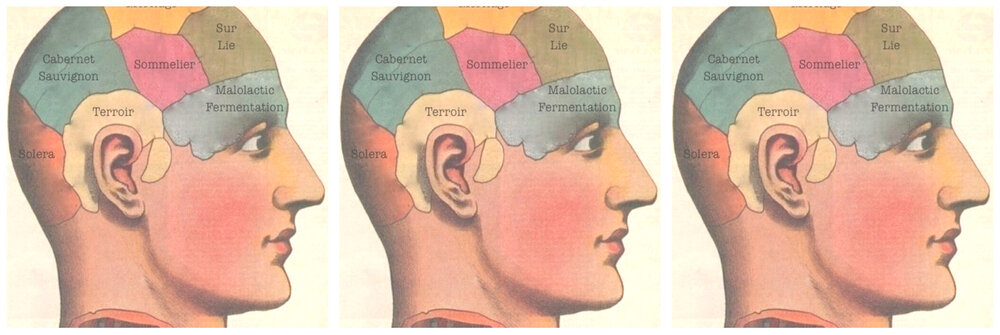
"Terroir" is a French term which, loosely translated, means "a sense of place." It is used to refer to products (i.e. cheese, meat and, of course, wine) that reflect or represent qualities unique to a specific geographic location. With respect to wine, terroir refers to the intersection of grape variety, soil type, climate and winemaking technique and how these factors come together to create a wine that cannot be produced anywhere else in the world.
The art of blind tasting is based on the concept that a wine can look, taste and smell a certain way depending on where it was produced. So, if a wine is said to express terroir, the wine is believed to represent where it comes from and is therefore considered a "wine of place."
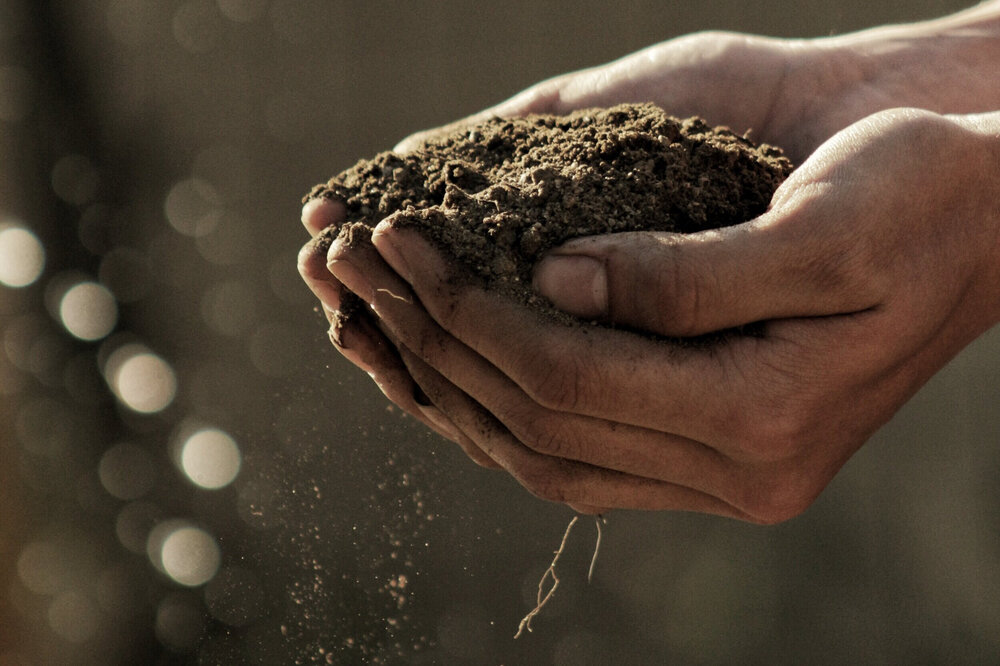
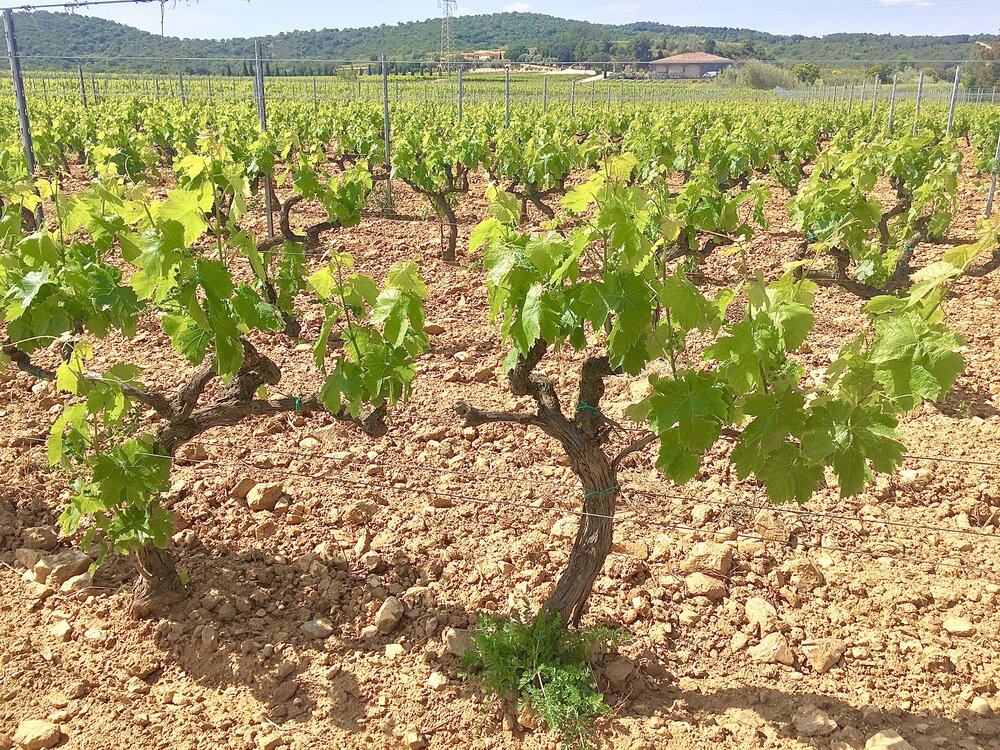
It is important to note the concept of terroir has special significance in Old World wine regions (i.e. France, Italy, Spain) where wine has been produced since approximately the fourth century. Today, winemakers in these storied regions are tasked with upholding and preserving the vinous traditions of their ancestors by relying on their wisdom, keen observations and tried and true techniques which have been passed down from generation to generation.
New World wine regions (i.e. United States, South America, Australia), on the other hand, have only been making wine since approximately the sixteenth century, often using vine cuttings and winemaking techniques imported from the Old World. By simple virtue of time, New World wine regions don't yet have the experience with and knowledge of their geography that Old World regions do. Today, the evolution of terroir in the New World continues to be an exciting and dynamic process.
I hope you enjoyed this Wine Word of the Week and learning more about the fascinating concept of terroir. And if you would like to suggest a wine-related term for Wine Word of the Week, please leave it in the comment section below.
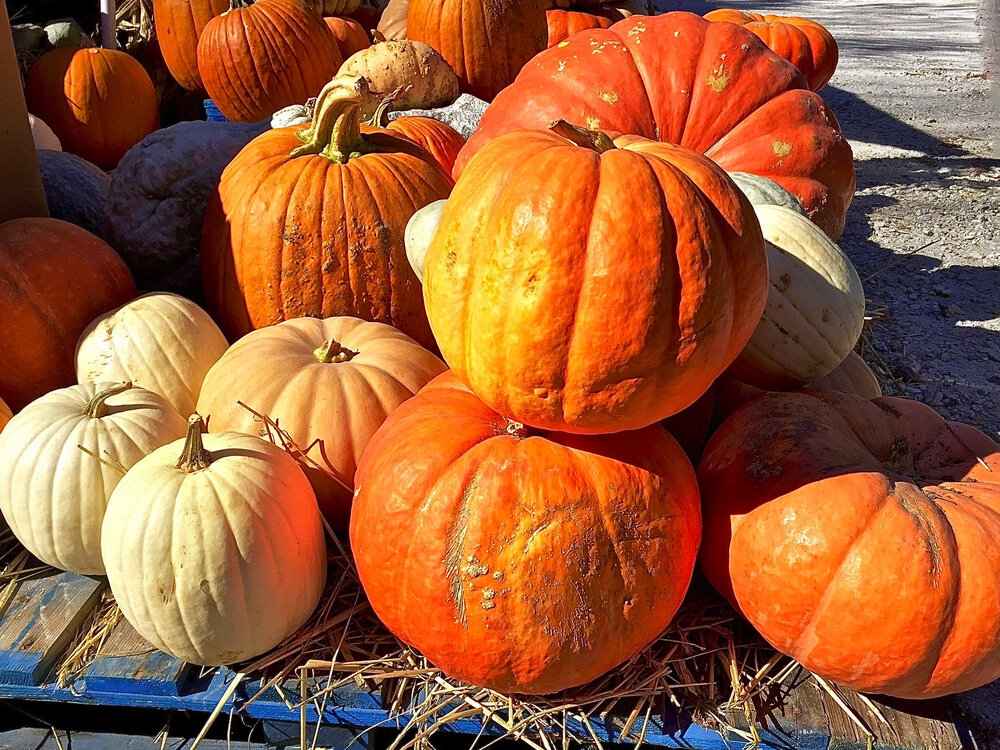
Labor Day has come and gone and those lazy Summer days have magically transformed into the pre-holiday countdown. In many parts of the country the arrival of Fall is heralded by the beautiful changing of leaves and a refreshing dip in the temperature, but in other parts of the country, like here in sunny South Florida, the change of season is not as discernible.
In these warmer climes it helps to usher in this oh so savor-worthy season with certain distinct rituals. Here are my 5 fabulous things that are sure to put you in the Fall frame of mind:
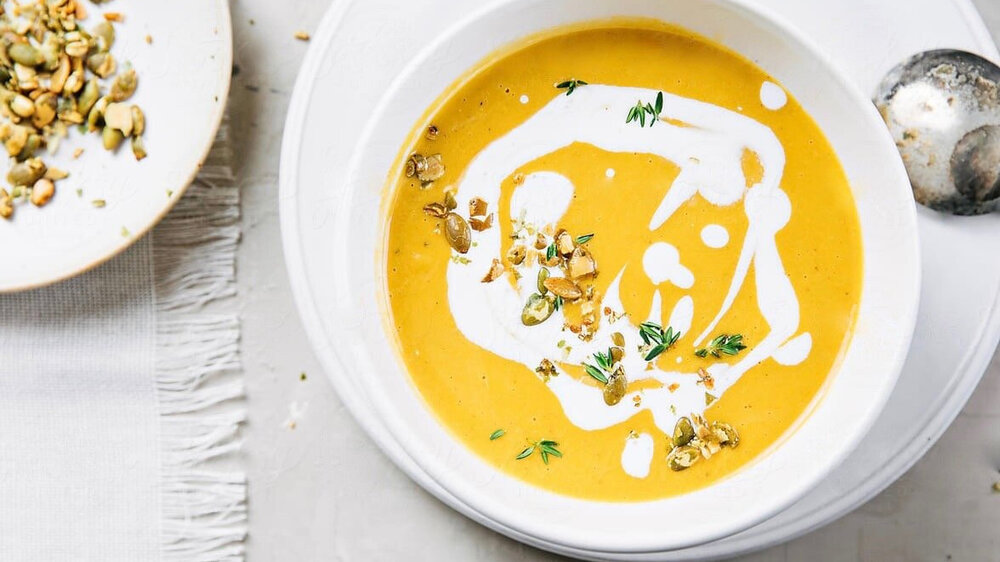
Butternut Squash Bisque, Porcini Mushroom & Barley Soup, Quick Coq au Vin and Pumpkin Pie Trifle are just a few recipes that beautifully showcase some of the favorite flavors of Fall. Simply pick a recipe based on one of your favorite flavors and practice up. By the time the holidays roll around you'll be ready to bring a delicious side dish or dessert and who knows, you might even feel like hosting the holiday meal yourself!
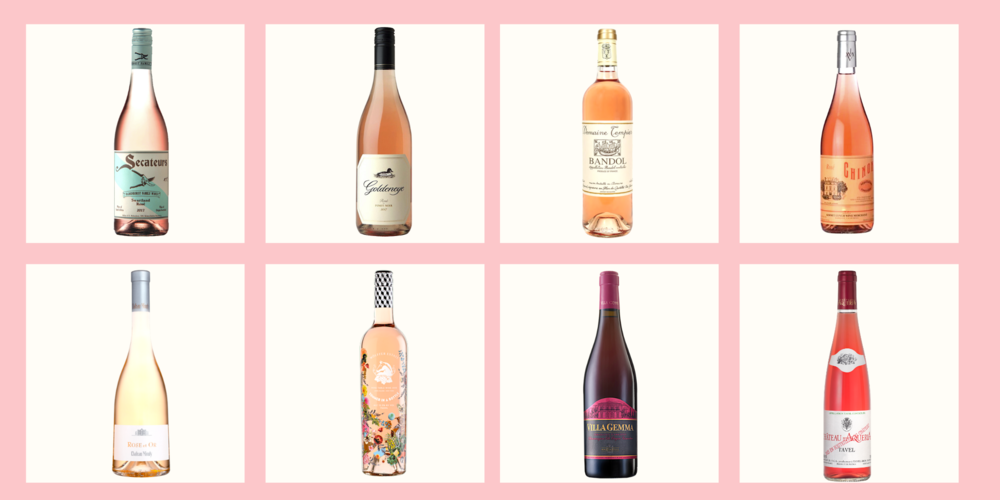
Rosé is the quintessential Summer wine and since 99% of rosé produced is best consumed upon release, NOW is the time to drink up! Maybe an "End of Summer Rosé Soirée" (yes, I used to have pink hair!) is the way to go depending on how many bottles you have left. But, in addition to drinking that rosé while it's fresh and delicious you also need to make room for those wines best suited for Fall such as Viognier and Pinot Noir, and let’s not forget those deeper, full-bodied rosés.
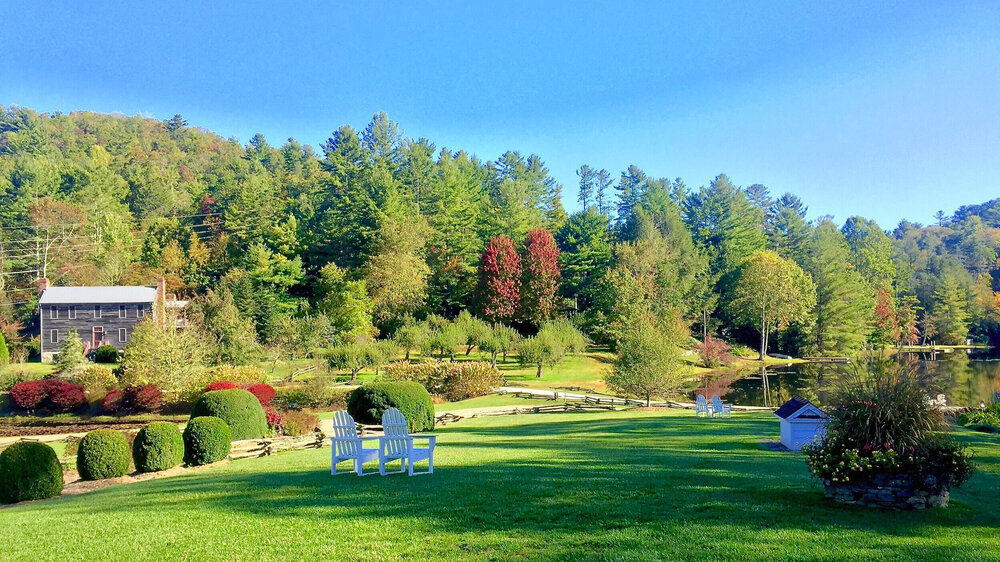
There's nothing like witnessing the changing of the leaves from vibrant green to magnificent shades of red, gold and brown to put you in the mood for Fall. And while we’re all a little reticent to hop on a place right now given the Coronavirus crisis, a great region for leaf peeping might be a quick road trip away! So pack your cozy sweater and comfy boots and head to one of the many U.S. regions known for fabulous Fall foliage. Some of our favorites include Boston, Massachusetts; Cashiers, North Carolina; and Boulder, Colorado (for more information, please click here).

Do you like to dress up for Halloween but usually end up throwing together a makeshift costume at the very last minute? Well forget that ratty old witch's hat and plan to host your own Halloween Costume party this year! With COVID still looming, keep things small and intimate but even planning something small will still get you in the spooky spirit. Put the word out now using these super fun, stylish invitations and have fun planning your costume in addition to all the party details. And NO Halloween party is complete without this deliciously gruesome recipe for Savory Severed Arm in Marinara Sauce!
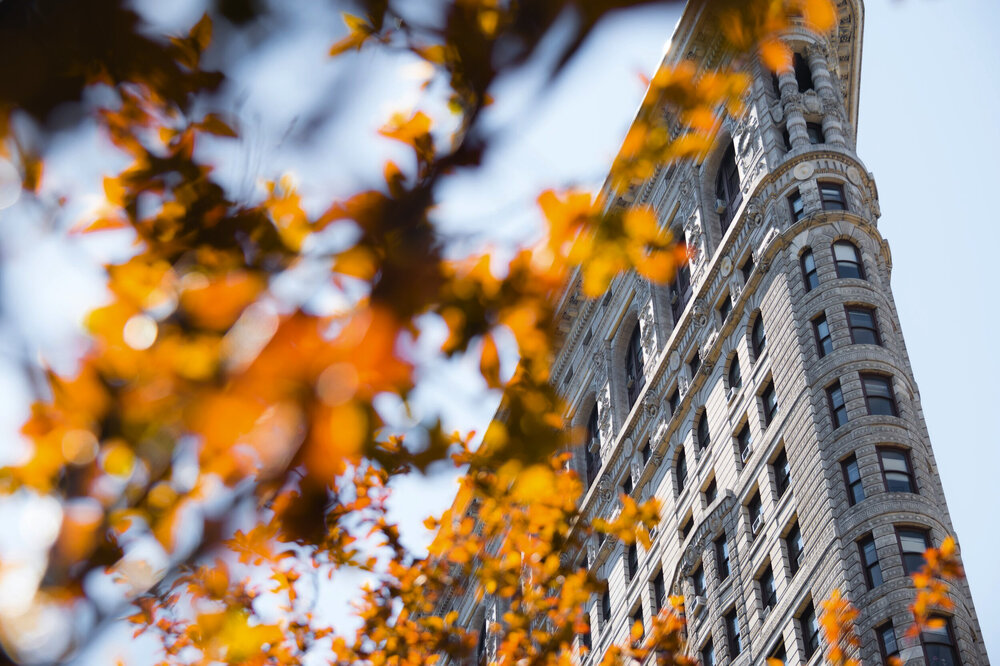
Perhaps one of my favorite things about this time of year is the music. Whether you're driving in the car, making dinner in the kitchen, or taking a brisk walk be sure to keep your favorite Fall playlist on the ready. Some of our favorite songs for the season include Lady Gaga's "Orange Colored Sky"; Vince Guaraldi's "Great Pumpkin Waltz"; and "Autumn in New York" by Ella Fitzgerald and Louis Armstrong.
I hope these suggestions help make your transition into Fall more enjoyable. What are some of your favorite things that put you in an Autumn state of mind?
And if you’d like to receive a decadent morsel of deliciousness in your inbox every Saturday, please sign up to receive my free, weekly newsletter, “The GG Guide to Wine + Food” by clicking here. It’s a treasure trove of seasonally-inspired, Sommelier-selected wines, recipes, pairings + travel tips. xo
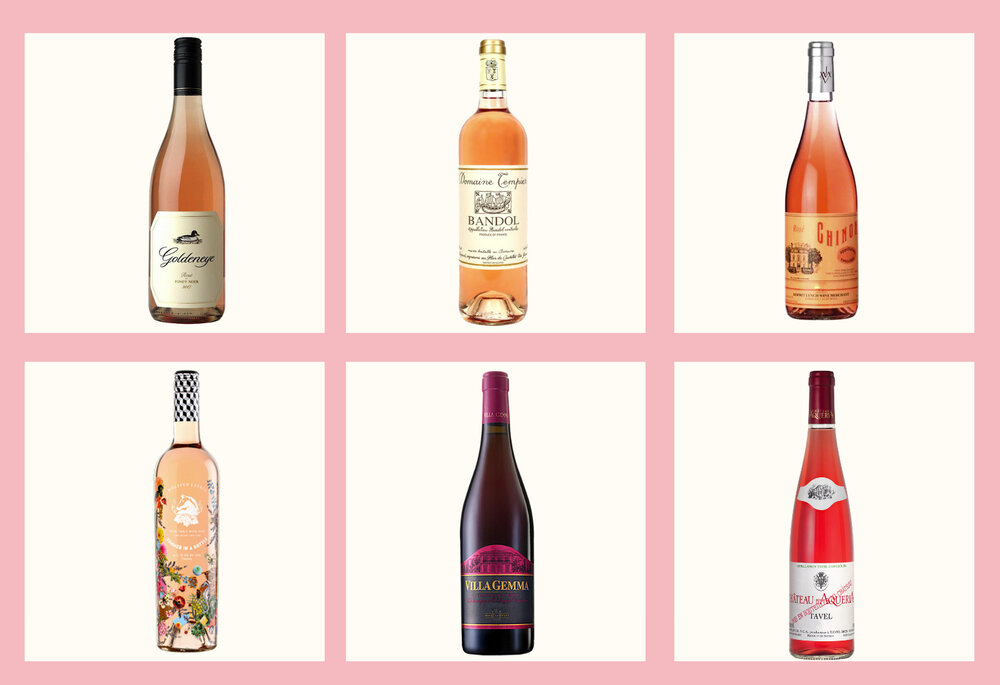
As we ease into Fall, I know you’re probably looking forward to embracing all the wonderful red wines that pair so brilliantly with the delicious dishes we look forward to during the chillier months. But since Fall doesn’t officially start until September 22nd and the temperatures are still soaring into the triple digits in most of the U.S. (please, make it STOP!), I have some delicious rosé recommendations to share that are going to help you make the transition seamlessly.
But lest you think these are the pale, rose petal pink Provençal rosés of Summer…think again! No, the wines in this post are located on the other end of the rosé spectrum. They’re the crimson-hued, deeply colored, pink wines that are packed with flavor and beautifully bridge the gap between the lighter rosés of Summer and the fuller-bodied red wines of Fall and Winter.
You might be surprised to learn that this spectrum of rosé wine even exists! Since the Provencal rosés have gotten so much press during the #RoséRevolution, many of the other beautiful shades of pink wine still remain well kept secrets. Well, that ends today and I’d like to encourage you to drink the rosé rainbow, and the wines listed here provide the perfect opportunity to do just that.
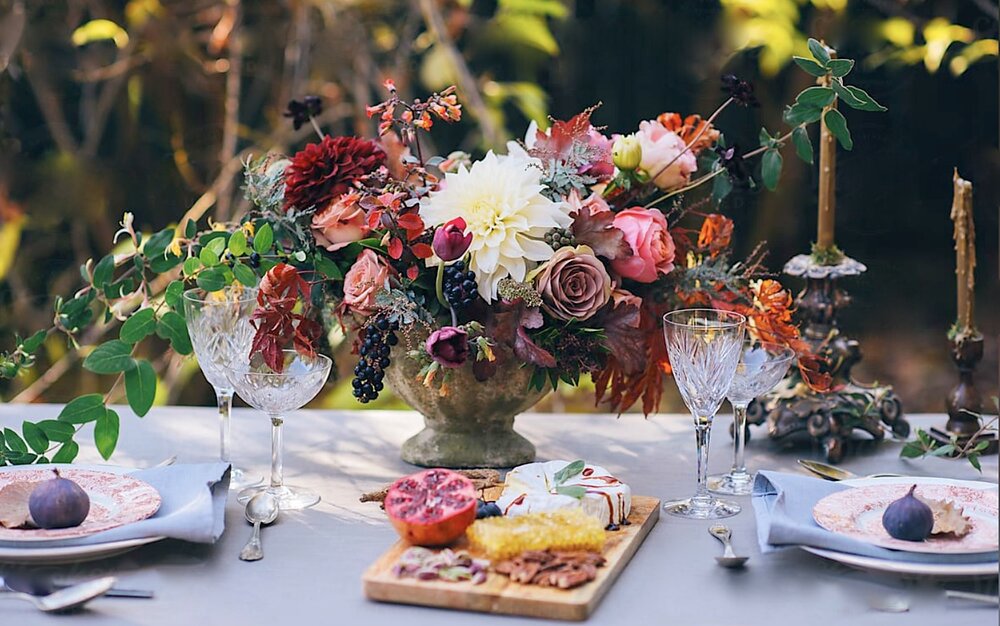
And because these rosés contain more color, flavor and tannin than their lighter counterparts, I like to call them “red wine drinker” rosés. Mostly because my die hard red wine lovers who generally despise wimpy Provencal rosés, positively LOVE the darker colored pink wines. But these wines are so user friendly, as we usher in Fall they can provide enjoyment to a variety of wine lovers. This is also a great way to get acquainted with some unfamiliar grape varieties including Nebbiolo, Mourvedre and Negroamaro which make some truly brilliant pink wine.
So go forth, scroll down and enjoy these recommendations and if you have any questions about anything you read here, please let me know in the comments section below.
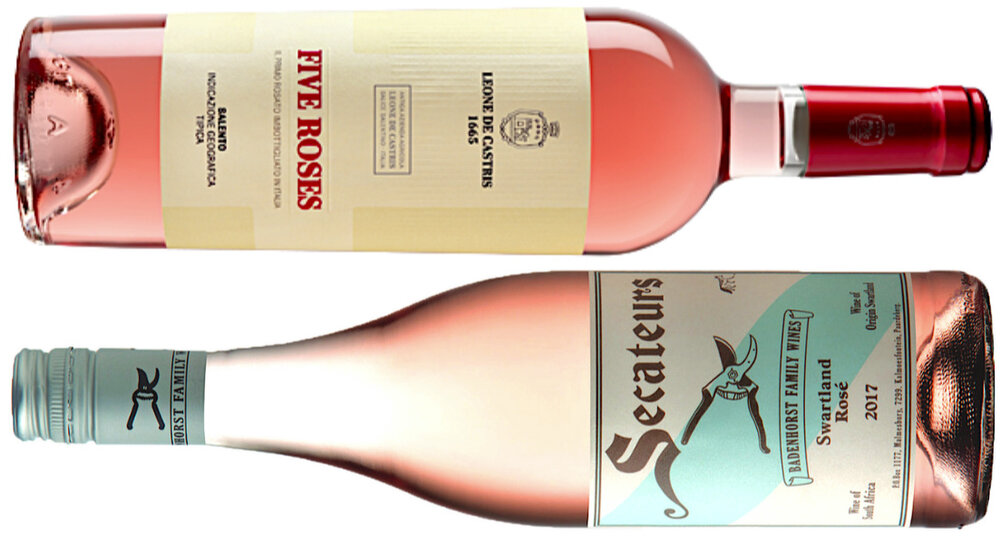
Leone de Castris Five Roses Salento Rosato, Puglia, Italy ($16): In Italy, rosé goes by the name “rosato” and this one represents the very first pink wine to ever be bottled and sold in Italy back in 1943. The current vintage is a blend of 90% Negroamaro, a dark, thick-skinned, red Italian grape with blackish-violet skin that produces wines with medium-plus tannins, and 10% Malvasia Nera, a blending grape that brings additional color and aromatics to the finished wine. The end result is a delightfully dry, medium-bodied rosato with notes of baked plum, cherry and spice with a delightful herb and spice-tinged finish.
A.A. Badenhorst Secateurs Rosé, Swartland, South Africa ($14): If you’ve been following my recommendations lately, you know I’m obsessed with the Secateurs wines. They offer an incredible value for the price and their rosé is no exception! This savory blend of 90% Cinsault and 10% Shiraz will keep you coming back for more with enticing notes of wild strawberry, watermelon and earth accentuated by a tangy, balsamic finish. And just FYI, this wine gets its gorgeous deep pink hue from 2 hours of contact with richly colored Shiraz grape skins.

Masciarelli Villa Gemma Cerasuolo d’Abruzzo, Abruzzo, Italy ($18): Established in 2010, the Italian Cerasuolo d’Abruzzo DOC is strictly dedicated to the production of rosato wine. It’s an appropriate name since “Cerasuolo” means “cherry red” which refers to the deep, translucent crimson color the wine has from very brief skin contact with the highly pigmented Montepulciano grape. As a big fan of this producer (check out this delightful pairing), I love this hearty gem that’s sure to delight those who enjoy a more mouthfilling style of rosé with notes of wild cherry, raspberry and herbs accentuated by lovely tannins.
Chateau D’Aqueria Tavel Rose, Rhône, France ($22): This deeply colored pink wine hails from France’s Southern Rhône, specifically, from Tavel, the first AOC ever established in France in 1936. This is a Grenache-based blend that includes other indigenous red and white grapes from the region including Grenache Blanc, Clairette, Cinsault, Mourvèdre, Syrah and Bourbolenc. As a rosé that’s closer to an actual red wine, it has a dazzling, deep ruby-red color and fragrant aromatics of red berries and spice. On the palate, ripe juicy flavors of cherry and ripe berries strawberry, cherry, peach,

Charles Joguet Chinon Rosé, Loire Valley, France ($22): Hailing from France’s Loire Valley, this rosé comes from well known producer Charles Joguet and embodies the beauty of the region’s signature red grape, Cabernet Franc. This medium-bodied, lively rosé, crafted from 100% Cab Franc, exhibits enticing aromas and flavors of raspberry, rose and cherry accompanied by savory herbal notes of lavender and thyme. Red wine lovers will adore this wine’s depth of flavor, slight grip of tannins and spice tinged finish that round out the experience.
Round Pond Estate Rosato di Nebbiolo, Napa Valley, California ($24): When I first tasted this wine at a trade tasting years ago…I was immediately intrigued! It was clearly no wimpy rosé and to this day, this California “rosato” exhibits tremendous depth of flavor and that delightful hint of grip that only tannins can provide. Crafted from 100% Nebbiolo, the same red grape responsible for the legendary Barolos and Barbarescos of Italy’s Piedmont region, this wine has aromas and flavors of blood orange, watermelon, strawberry and spice framed by a food friendly acidity and fine grained tannins.
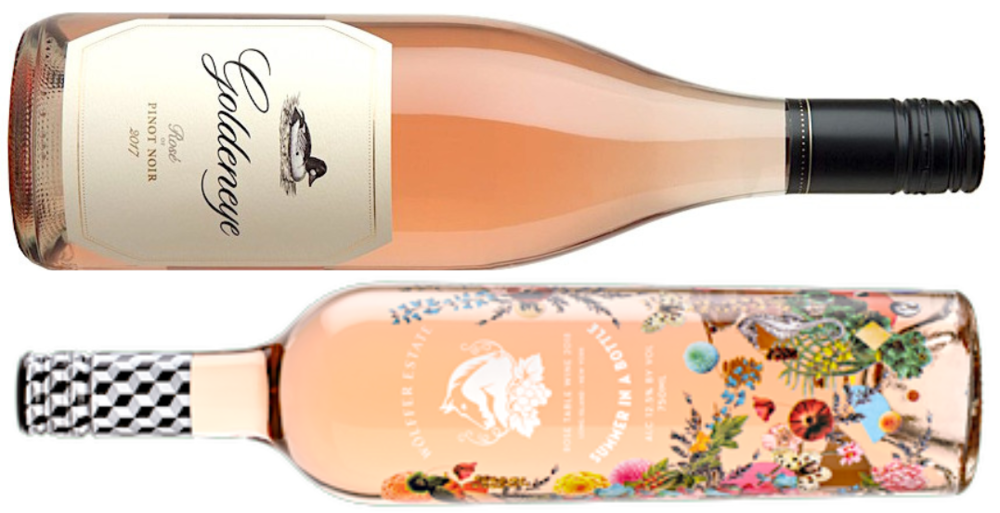
Goldeneye Rosé of Pinot Noir, Anderson Valley, California ($25): This gem from the legendary, California-based Duckhorn portfolio, has been one of my best sellers since last season! This delightful rosé is a blend of 90% Pinot Noir and 10% Pinot Meunier, and while crafted from relatively reserved grapes, this sophisticated rosé seduces with layers of flavor featuring notes of white peach, orange peel, strawberry and spiced pear. The fruit is accentuated by a lively, yet graceful acidity and a lengthy, spice-tinged finish.
Wölffer Estate “Summer in a Bottle” Rosé, Long Island, New York ($26): Hailing from Sagaponack, NY in the bucolic glory of the Hamptons this rosé is a creative blend of 40% Merlot, 22% Chardonnay, 12% Cabernet Sauvignon, 7% Gewürztraminer, 6% Cabernet Franc, 4% Pinot Meunier, 4% Pinot Blanc, 3% Riesling and 2% Sauvignon Blanc. As the sheer number of grapes might suggest, this delightfully aromatic wine is packed with flavor exhibiting notes of blood orange, guava, spiced pear and strawberry accompanied by a fabulous, food-friendly acidity and fine-grained tannins.

Domaine Tempier Bandol Rosé, Provence, France ($40): The pale color of this rosé from this iconic, Provençal producer belies the fabulous flavor you’ll discover in your glass. Crafted primarily from Mourvèdre, the region’s signature red grape, with a bit of Grenache and Cinsault added for good measure this refreshing wine delights on the palate with complex aromas and flavors of blood orange, tart cherry and peach accentuated by a lovely minerality and notes of savory rosemary, lavender that conjure the terroir of this beloved wine region.
Chateau Minuty Côtes de Provence Rosé et Or, Provence, France ($45): Hailing from the South of France with vines planted on the Saint-Tropez peninsula overlooking the stunning Côte d’Azur this delightful bottling is a blend of the winery’s signature grape, Grenache, with a splash of Cinsault. This wine delivers enticing, fragrant aromas of candied citrus, red berries and white flowers while on the palate intense flavors of pink grapefruit, white peach and wild strawberry are accentuated by a bright acidity and a crushed limestone and citrus-tinged finish.
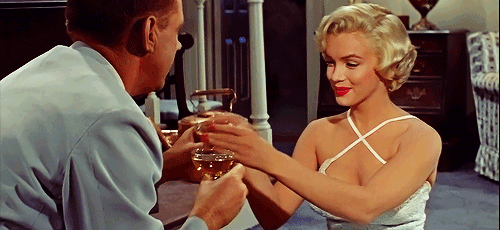
I only drink Champagne on two occasions, when I am in love and when I’m not.
Champagne is one of the most luxurious wines in the world. It’s high price tag and French pedigree are part of the reason but, equally so is its enduring association with some of the most glamorous people in history. Iconic fashion designer Coco Chanel, King Louis XV’s paramour, Madame de Pompadour, and legendary actress Marilyn Monroe were all huge fans who were known to passionately extoll the gloriousness of this sparkling elixir.
But Champagne is fascinating from a technical perspective as well.
From the intricate way it’s made to the rich history of the region it comes from, Champagne is truly the unicorn of the wine world and this essential Champagne 101 guide will demystify this vinous treasure for you and reveal all the basic fundamental information you need to know. And if you just so happen to be on a quest to broaden your vinous horizons and increase your knowledge base in the world of wine, be sure check out my White Wine 101 and Red Wine 101 posts as well.
But first things first.
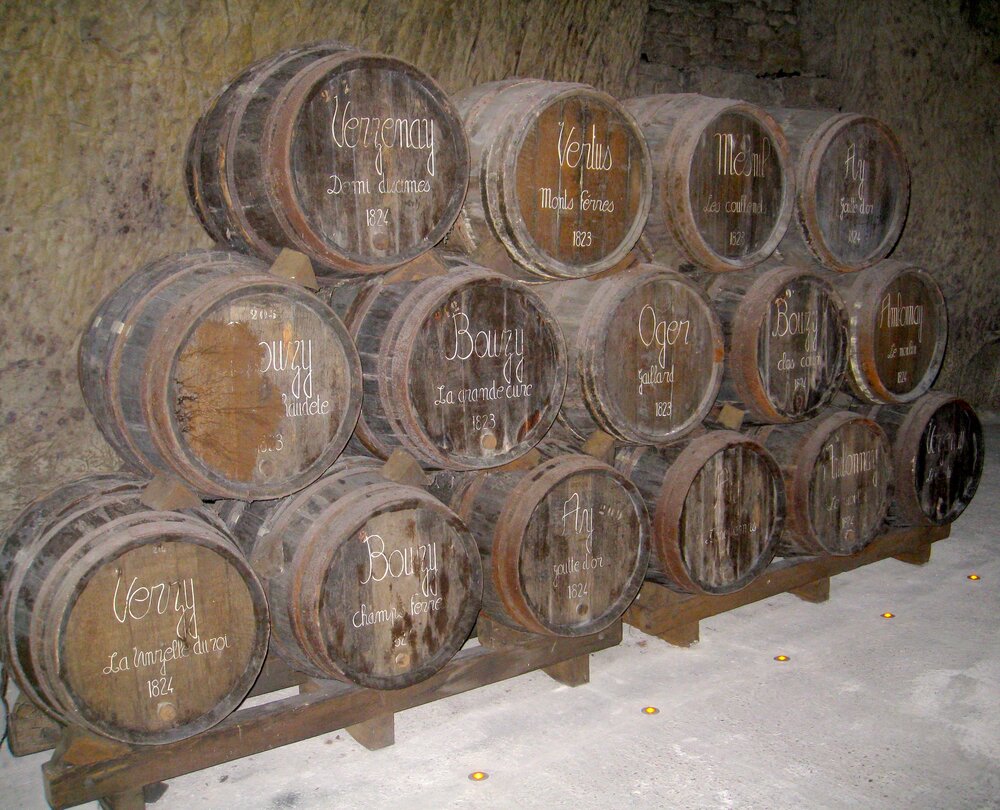

In ANY discussion about Champagne it's important to note that while ALL Champagne is sparkling wine, NOT ALL sparkling wine is Champagne. Only sparkling wine from the actual Champagne region of France can be called Champagne. So even if a sparkling wine is made using the same grapes and the same method as Champagne but it comes from outside the geographic region, by law it cannot be called Champagne.
And if you try to call it that, they will sue you.
Yes, the Champenois are litigious…but for good reason. In the early days of California wine country, the habit of featuring the term “California Champagne” on bottles of sparkling wine became pretty widespread. Eventually, the Comité Interprofessionnel du vin de Champagne (aka the CIVC), the governing body of the Champagne region, took umbrage at this vinous appropriation and took action. Well, sort of.
While all Champagne is sparkling wine, not all sparkling wine is Champagne.
The “Treaty of Versailles” was drafted in 1919 following WWI and it addressed this issue among many others, however, the treaty was never ratified by the United States which was in the midst of Prohibition at the time, so it hardly seemed relevant. Once Prohibition ended in 1933, however, U.S. wine producers were still free to continue to legally use the term “Champagne” on their bottles, much to the chagrin of the Champenois.
Thankfully, over the years many New World winemakers began using the term “sparkling wine” instead of Champagne on their sparkling wine bottles and in 2006 the U.S. and the European Union finally signed a wine trade agreement. In it, the U.S. agreed to no longer allow any new uses of certain place names on wine bottles, however, anyone who already had an approved label such as Cook’s, Korbel, André and Miller High Life were grandfathered in and are still allowed to use the Champagne name to this day.
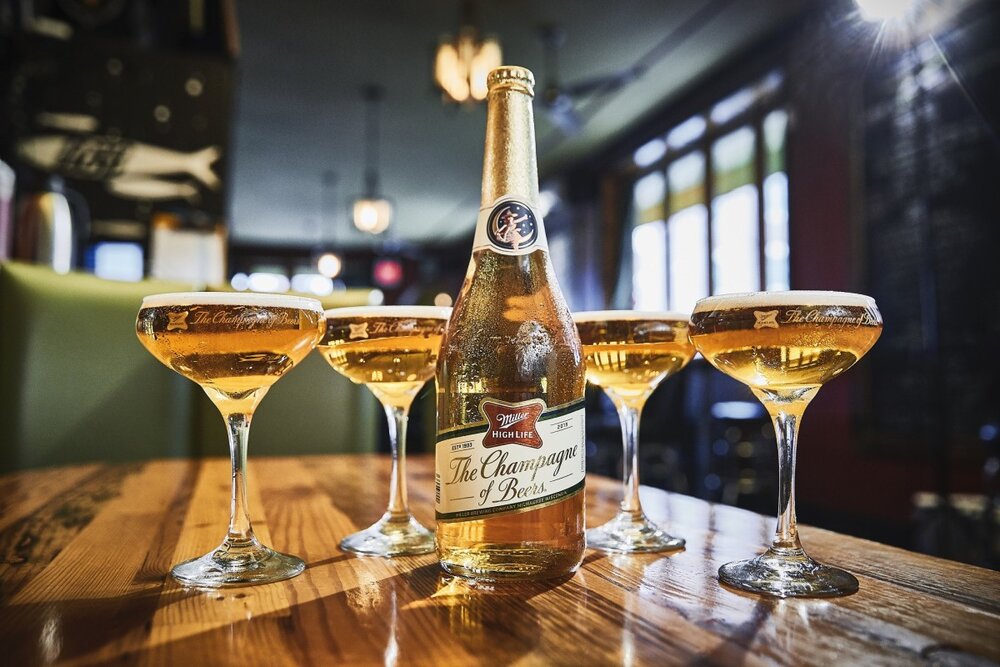
More recently, companies outside the wine world like Apple, Perrier and Yves Saint Laurent have also felt the legal wrath of the CIVC when they tried to use the Champagne name in association with their products. This CIVC’s vigilance has paid off, however, and helped to preserve the history and integrity of the Champagne name.
“So what’s the big deal?” you might ask. “All these decades of strife over a name?”
I’m SO glad you asked!
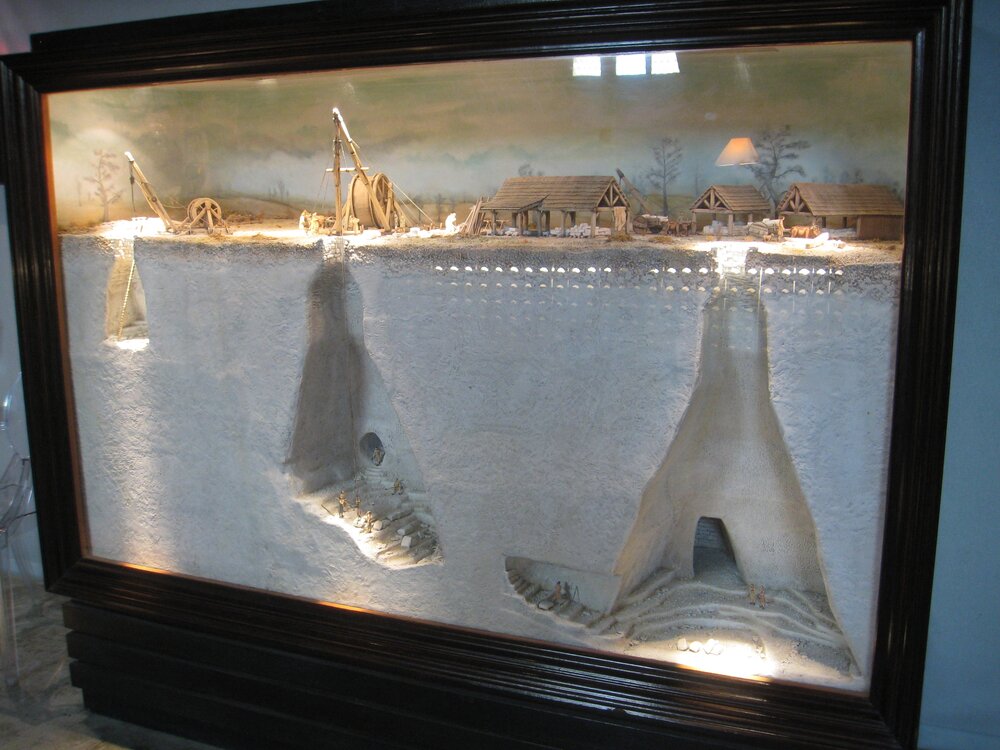
Ruinart’s depiction of how Champagne’s legendary chalk caves were dug.
You see, Old World wine regions like Champagne are ALL about the concept of terroir, a French term that describes the way a wine reflects the place it comes from. Perhaps more accurately, terroir refers to the intersection of grape variety, climate and soil type and how these components come together to produce a wine that can’t be duplicated anywhere else in the world.
Old World wine regions have had centuries to perfect their knowledge of their land and they now definitively know which regions grow which grapes best. That’s why nobody in Burgundy is growing Cabernet Sauvignon and nobody in Champagne is growing Syrah. Because of this, they identify their wines by region rather than by grape variety like we do in the US. The same concept applies to food products like Prosciutto di Parma and Comté cheese which come from specific places in their respective countries.
Alternatively, here in the U.S., we’ve only been making wine for about 200+ years and we’re still experimenting with growing different grapes in different regions. In Napa Valley alone, one of our country’s oldest wine regions, you’ll find vineyards dedicated to numerous grapes including Sauvignon Blanc, Zinfandel, Cabernet Sauvignon and Refosco. So we label our wines by grape variety rather than location which is why deciphering Old World wines can be somewhat of a challenge…but one definitely worth accepting!
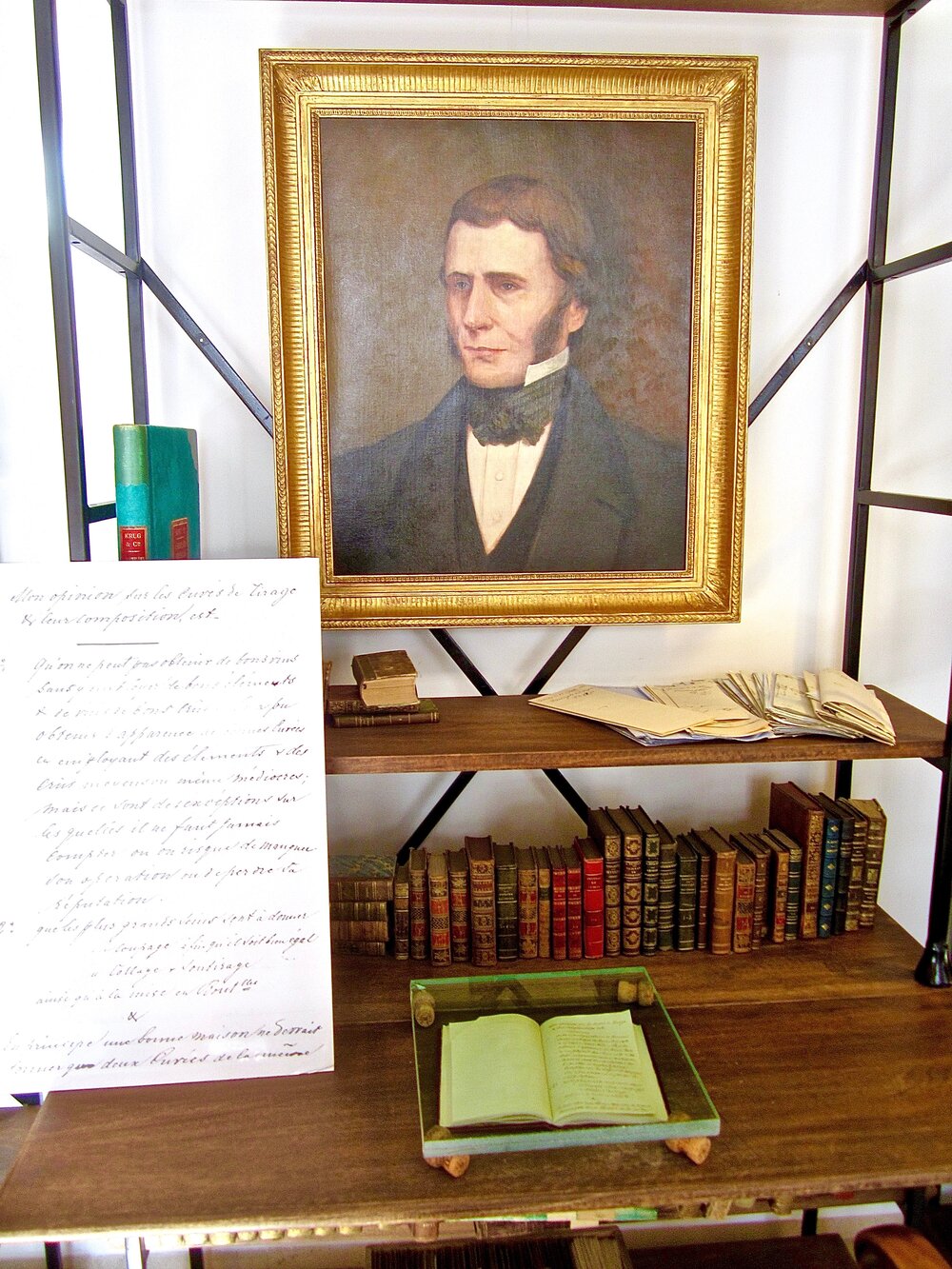
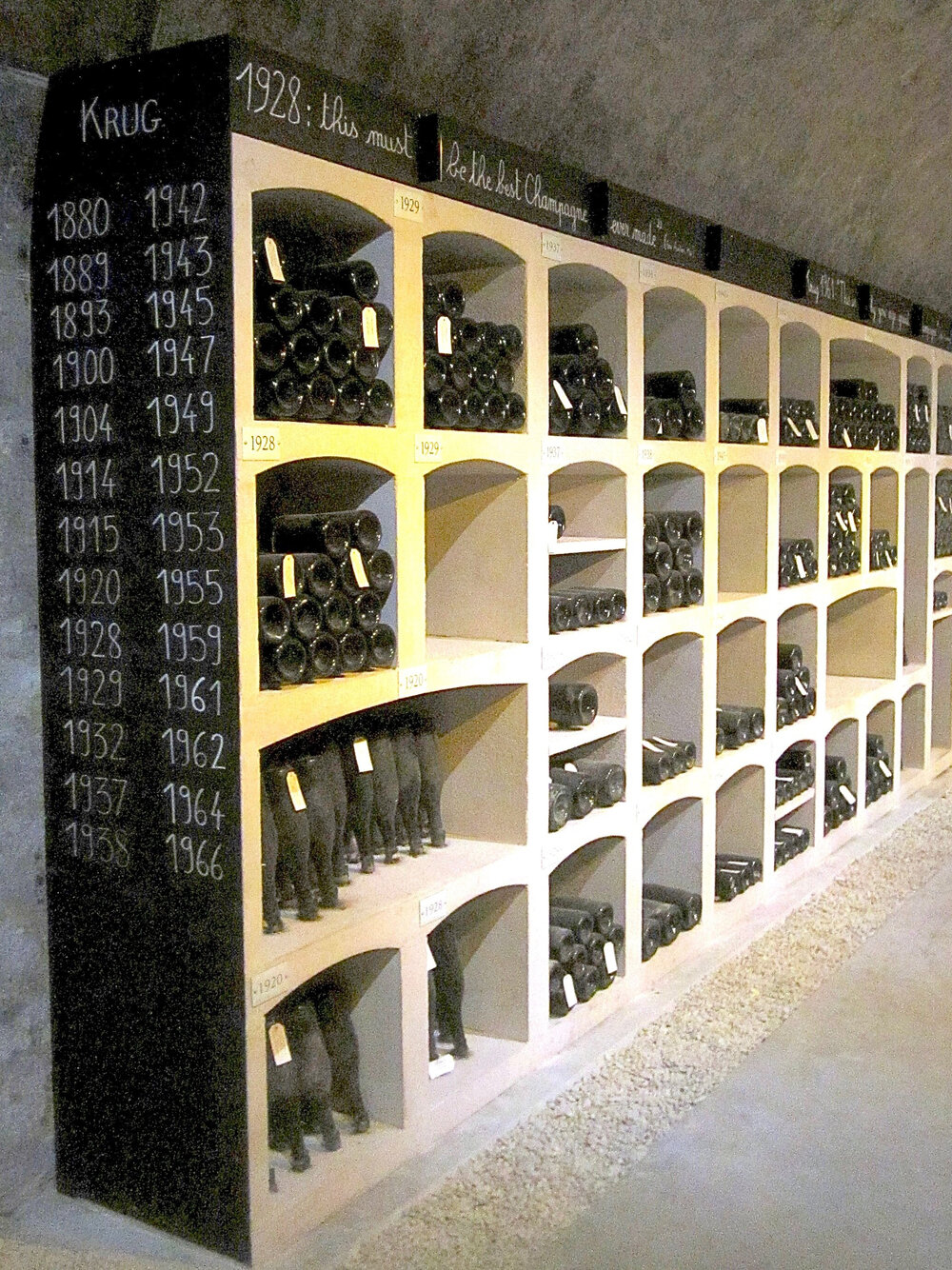
The Champagne production zone (AOC vineyard area) was defined by a law passed in 1927 and encompasses roughly 34,300 hectares of vineyards. It lies approximately 100 miles northeast of Paris, spreading across 319 villages (‘crus’) in five departments: the Marne (66% of plantings), Aube (23%), Aisne (10%) and Haute-Marne + Seine-et-Marne.
A primary distinguishing feature of the Champagne region is its sheer geographic location, the grapevines are planted at the northernmost limits of their cold tolerance. Average annual temperature in Reims and Epernay (latitudes 49°5 and 49° North) is just 50°F and vines, like all plants, require minimal weather conditions to survive and in the Northern Hemisphere, they rarely thrive beyond latitudes 50° North and 30° South.
The region’s second major distinguishing feature is its dual climate, which is predominantly oceanic but with continental tendencies. Champagne also receives barely 1,650 average annual hours of sunshine compared with 2,069 in Bordeaux and 1,910 in Burgundy. The growth rate is accordingly limited, giving the grapes the freshness and crispness that Champagne requires.
There are also four main growing areas (see map below):
The Montagne de Reims: Its soils are chalk-based, with striations of loam, lignite, clay, sand, silt, and marl. It contains nine Grands Cru villages and Pinot Noir is the main grape cultivated here.
The Vallée de la Marne: This sub-region is located on the riverbanks of the Marne and its soils are more variable than in other Champagne sub-region. It contains only two Grands Cru villages: Ay and Tours-sur-Marne and Pinot Meunier is the main grape variety planted here.
The Côte des Blancs: This sub-region owes its name to the color of the grape that is planted there: 95% Chardonnay. Champagnes produced in this area often include the term "blanc de blancs" and it is the source of Chardonnay for many vintage Champagnes and prestige cuvées from the large Champagne houses. Only four villages are located on the actual Côtes des Blancs slope, namely Avize, Cramant, Le Mesnil-sur-Oger and Oger which are known for producing wines with light, delicate aromas and finesse and elegance.
The Côte des Bar: This is the only major sub-region in the Aube, located southeast of the town of Troyes. Pinot Noir is the predominant grape grown here although small amounts of Chardonnay and, to a lesser extent, Pinot Meunier can be found here as well. Other approved grape varieties that are seldom used can also be found here including Pinot Blanc, Arbane and Petit Meslier.
Together these regions encompass nearly 280,000 plots of vines, each measuring roughly 12 acres (100 square metres). Seventeen villages have a traditional entitlement to Grand Cru ranking and 42 to Premier Cru ranking.
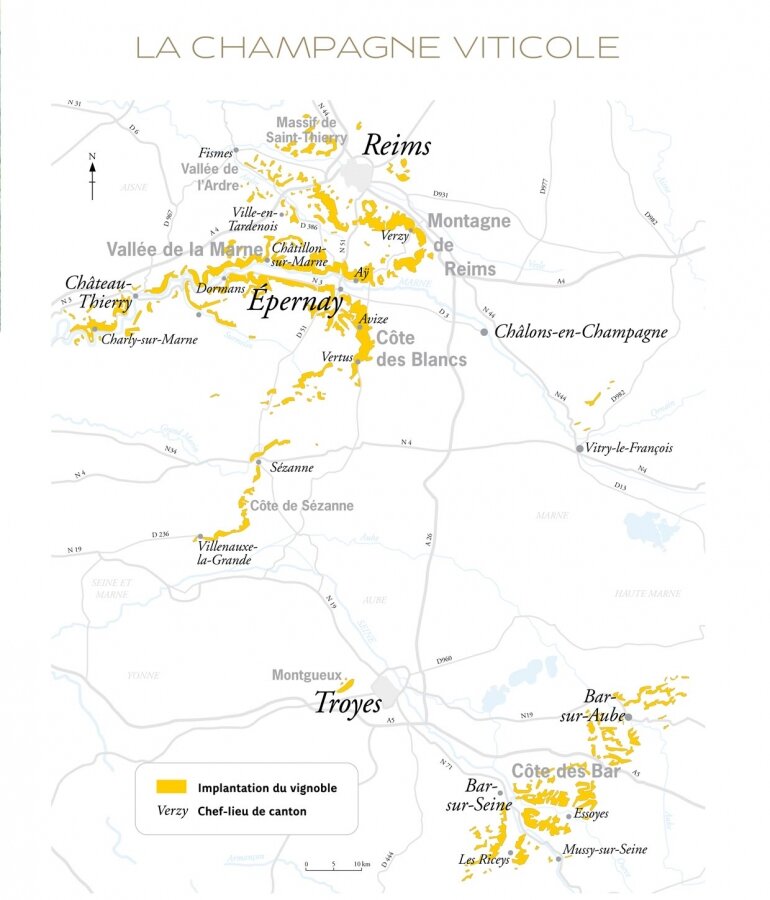
Unlike the vintage dated wines we’re used to seeing on store shelves that represent the majority of wines produced, Champagne is first and foremost about the art of blending.
With few exceptions, most Champagnes on the market are a blend of grapes, vintages and vineyards. With respect to the most common type of Champage produced, non-vintage Brut, these components are brought together by the winemaker with the express intention of creating consistency from year to year. They do this using the three main approved grapes in Champagne that each bring a little something different to the wine:
CHARDONNAY: The only white grape of the Champagne trinity, Chardonnay contributes elegance and acidity to the finished wine, allowing it to age with grace and finesse. Chardonnay accounts for 30% of the region’s plantings and does particularly well in the Côte des Blancs where is yields delicately fragrant wines with characteristic notes of flowers, citrus and minerals. It is the slowest to mature of the three Champagne varietals and also the longest-lived.
PINOT NOIR: Accounting for 38% of plantings, Pinot Noir grows particularly well in the cool, chalky soils of the Montagne de Reims and the Côte des Bar. Pinot Noir adds backbone, body and heft to the blend, producing wines with distinctive aromas of red berries and good structure that can also age particularly well.
PINOT MEUNIER: The least well-known of the three grapes, Pinot Meunier accounts for 32% of plantings in the region and shows better cold-weather resistance than Pinot Noir, which is notoriously difficult to grow. Meunier is well suited to the soils of the Marne Valley and adds roundness to the blend, producing supple, fruity wines that tend to age more quickly than wines made with the other two varieties. Therefore it is most useful in non-vintage Champagnes intended for near-term drinking.
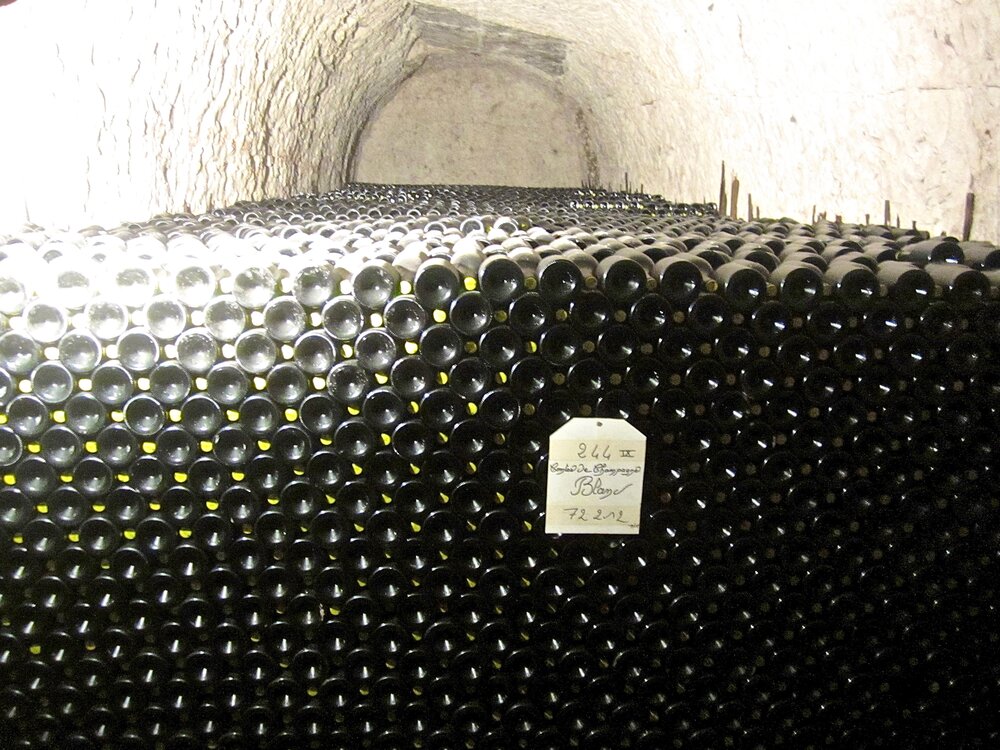
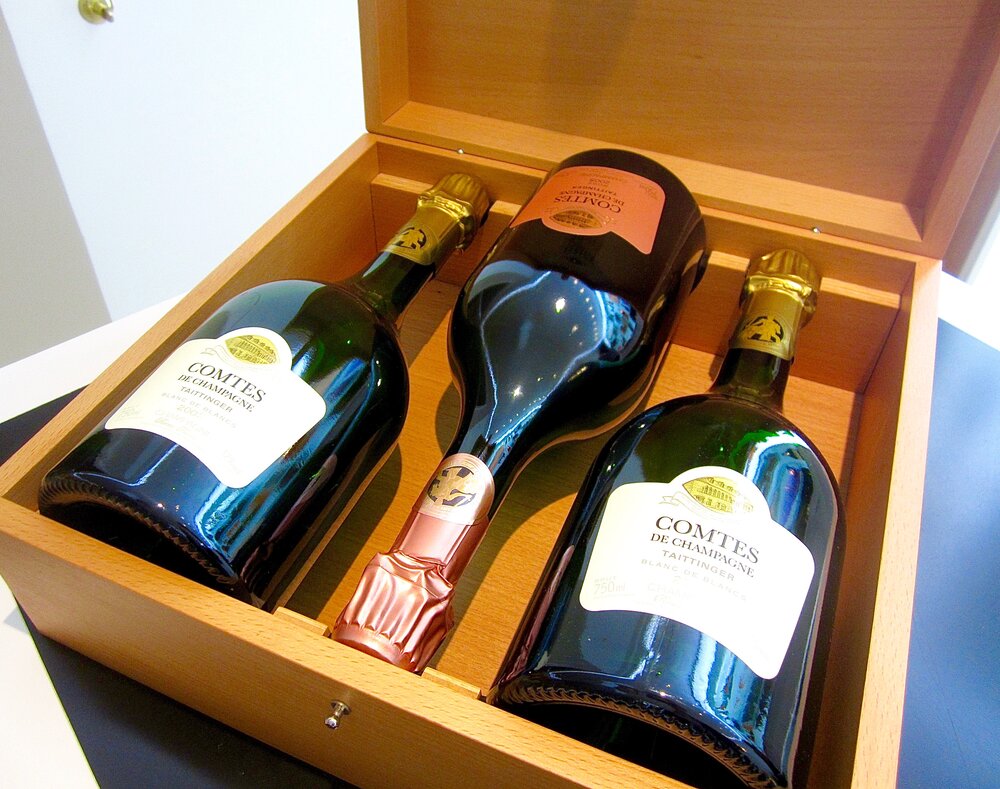
All Sparkling Wine undergoes a secondary fermentation to get its bubbles, and it’s WHERE Champagne undergoes its secondary fermentation that makes it so uniquely special!
By law (Old World wine regions have lots of laws regarding winemaking!), Champagne must undergo its secondary fermentation in the bottle it is later sold in. This is the main tenet of the Méthode Traditionelle (aka Traditional Method and Méthode Champenoise) which is the only method that can be used to produce Champagne. This is a much more time- and labor-intensive method of making sparkling wine compared to the Charmat Method that’s used to make Prosecco in which the secondary fermentation takes place in a tank.
Once primary fermentation has occurred and the base wines have been blended and bottled, a combination of still Champagne, beet sugar and yeast (aka “liqueur de tirage”) is added to each individual bottle to kick start the magical, bubble-inducing secondary fermentation. During this critical transformative process, the yeast consumes the sugar, thereby creating alcohol and carbon dioxide in the bottle. As the yeast cells complete their job, they eventually die and fall to the bottom of the bottle where they are referred to as “the lees.”
The lees impart a very desirable, biscuity, yeasty note that is a sensory hallmark of Champagne and other wines produced using the Méthode Traditionelle. The longer the wine remains in contact with the lees or dead yeast cells, the more pronounced this quality will be. By law, all Champagne must spend at least 15 months in the bottle before release, of which 12 months maturation on lees is required for non-vintage cuvées and three years minimum for vintage cuvées.
In practice however, most of the well-known Champagne houses cellar their wines for much longer, usually 2-3 years for non-vintage wines and 4-10 years for vintage Champagne. It’s important to note these wines spend this time maturing in the legendary chalk caves that lie deep beneath the city of Reims (see video below to see the cellars at Krug Champagne).
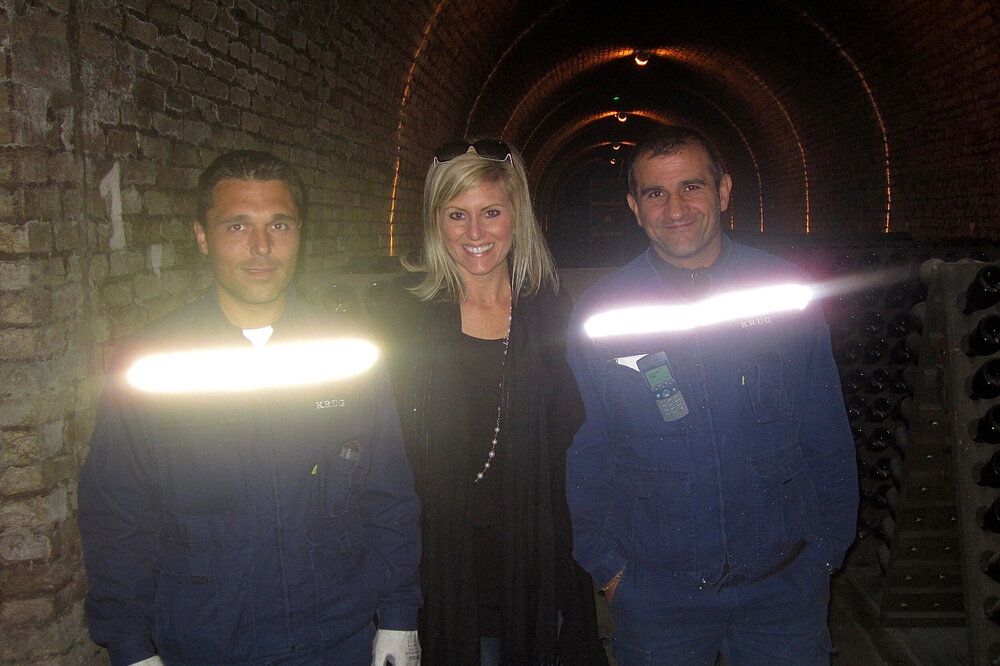
Towards the end of their long resting period, the Champagne bottles must be moved and rotated in order to collect and remove the sediment which is comprised largely of the aforementioned lees or dead yeast cells. This is accomplished through the process of riddling (aka “reumage”) in which the bottles are placed in A-shaped riddling racks, also known as "pupitres."
Initially, the bottles are placed in the racks horizontally, parallel to the floor and gradually, over time, they rotated and inverted either manually or mechanically by gyropalette. This motion causes the sediment to collect in the neck of the bottle where it is ultimately disgorged. Prestige cuvées are usually “riddled” manually which takes about 2-3 months while less expensive sparklers are done mechanically which takes approximately one week.
Once the bottles are completely inverted or “sur pointe” they are ready for disgorgement (aka dégorgement). During this time and labor-intensive process the neck of the bottle containing the sediment is plunged into a freezing solution, the temporary crown cap is then removed and the pressure inside the bottle causes the freezing plug to shoot out (watch video here), while spilling as little actual wine as possible.
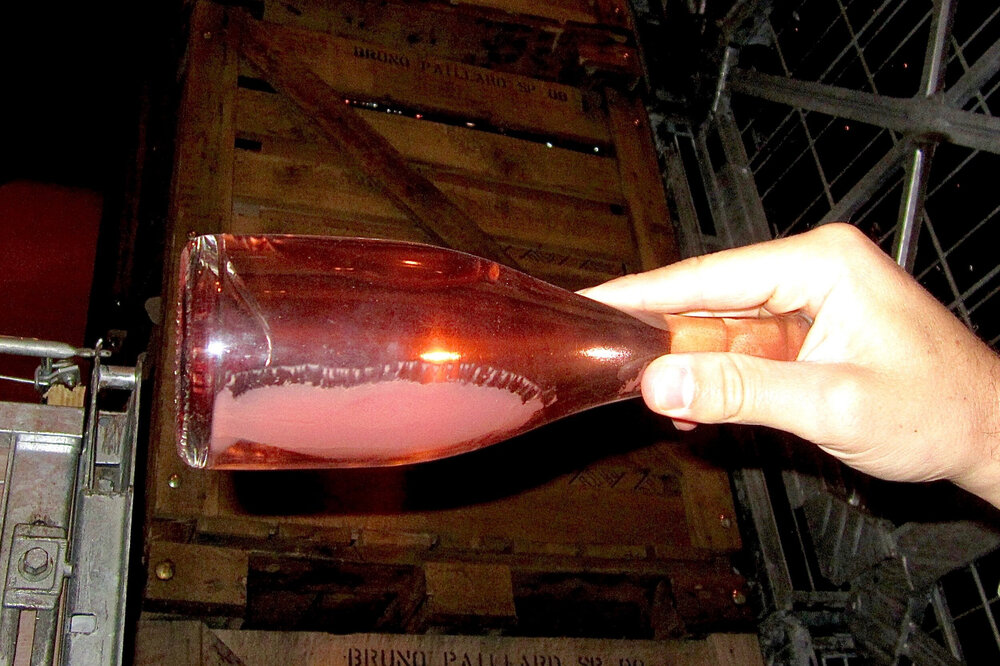

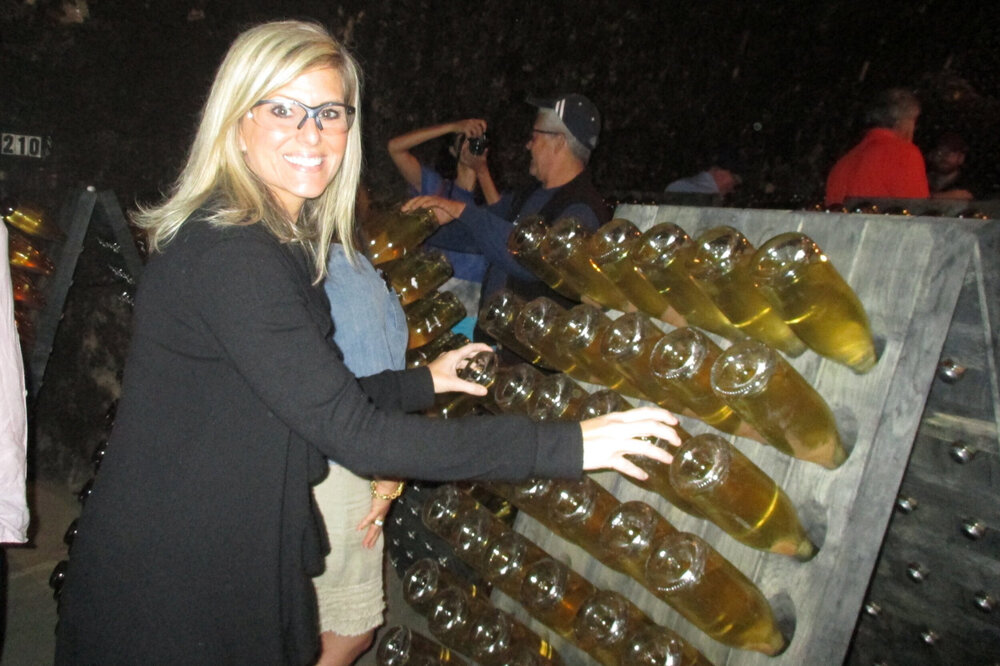
Before the bottle is sealed with a cork, there’s one more very important step: dosage. In order to replace any wine lost during disgorgement, the bottle is topped off with liqueur d’expédition, a mixture of wine and sugar that determines the sweetness level of the finished wine as well. The seven levels of sweetness are determined by the grams per liter of sugar (g/l) added during dosage (see graphic) and by law, that sweetness level must be included on the bottle’s label.
“Brut” is the most common classification you’ll encounter on store shelves followed by “Demi-Sec” and, more recently, “Brut Nature” which has become more popular in recent years due to its low level of sugar. It’s important to note, however, that sugar is added to Champagne mostly in order to balance its high acidity level. For instance, while Brut Champagne can contain up to 12 grams of sugar, it is intended to be perceived on your palate as dry. Due to the Champagne region’s cool climate, the grapes struggle to attain ripeness resulting in wines characterized by high acidity levels and the addition of sugar helps to create a more balanced and enjoyable sensory experience. It’s really not until you get to the Sec/Demi-Sec levels that the wines start to have a noticeable sweetness.
The Méthode Traditionelle concludes with sealing the bottle with a cork. The cork is squeezed into the bottle, covered with a protective foil capsule and then secured with a wire cage (aka muselet) to create an airtight seal. Champagne bottles are thicker than normal wine bottles because they must be able to accommodate the build up of pressure caused by the secondary fermentation. When you’re down in the chalk caves, every so often you’ll hear a “pop” when one of the sleeping bottles breaks due to a flaw in the glass.
Once corked, the bottles continue to age in the cellar until the winemaker deems them ready for release onto the consumer market. The natural, porous cork allows for micro-oxygenation to occur, and for that reason Vintage and Tête de cuvée Champagnes are excellent candidates for aging.
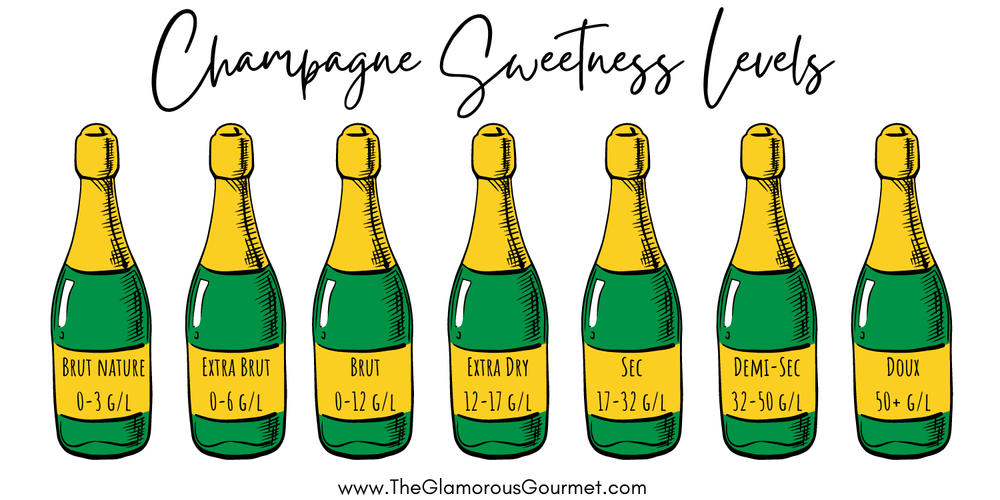
NON-VINTAGE BRUT: The most common type of Champagne, non-vintage Brut is a blend of vintages, grape varieties, vineyards and consists of 85% of Champagne made. It is comprised primarily of the current vintage’s wine with between 15-40% base wine from previous vintages added to create a similar tasting wine from year to year. While we mostly think of wines as a reflection of the vintage they’re from, non-vintage Brut is the exception to this rule. Consistency is the winemaker’s goal because this wine represents the “house style” and it is unique to each brand of Champagne.
For instance, Taittinger is known for its extensive Chardonnay holdings so its non-vintage “Brut la Francaise” is predominantly made of up Chardonnay with smaller percentages of Pinot Noir and Pinot Meunier. On the other hand, Bollinger favors the Pinot Noir grape so their “Special Cuvée” is comprised predominantly of Pinot Noir with small amounts of Chardonnay and Pinot Meunier as well.
VINTAGE: Conversely, Vintage Champagne is blended from the wines of a single ‘millésime’: a single outstanding year that the individual producer chooses to declare a vintage. These wines are only created in those years that are deemed outstanding by a particular house and thus, are meant to reflect all the nuance of the given year. Unlike non-vintage wines, only grapes harvested in the year featured on the label may be included in vintage-dated wines.
PRESTIGE OR TETE DE CUVÉE: At the opposite end of the spectrum from a Champagne house’s non-vintage Brut is their most special offering aka their Prestige Cuvée or Tête de Cuvée. This Champagne is usually comprised of the best of the best of everything that house has to offer and they are proprietary and unique to each house. And they can vary is styles and types too! Some are vintage some are non-vintage. Some are Blanc de Blancs and some are Rosé. It just depends on what the Champagne house wants to do.
Examples of well-known Prestige Cuvées include Louis Roederer’s Cristal, Moët & Chandon's Dom Pérignon, Taittinger’s Comtes de Champagne, Perrier Jouët's La Belle Époque and Veuve Clicquot’s La Grand Dame.
BLANC DE BLANCS: This French term translates to “white from whites” and refers to Champagnes made exclusively from Chardonnay grapes. These wines are generally lighter-bodied with a racy acidity that truly highlight the immense potential of the Chardonnay grape.
BLANC DE NOIRS: This French term translates to “white from blacks” and refers to a white wine (Champagne) made exclusively from black grapes which in Champagne are Pinot Noir and Pinot Meunier. As long as you separate the juice from the skins, you can make a white wine from black grapes as is the case in the Champagne region. These wines are fuller-bodied with a richer mouthfeel, reflecting the characteristics of the grapes it’s made from.
ROSÉ: This name of this style refers to the beautiful pink color of the Champagne that gets its color one of two ways: (1) saignée or (2) blending in still red wine. The saignée method requires the wine to get its color by macerating the juice with the actual grape skins for a period of time. This method produces a Champagne that more closely resembles a red wine with more tannins which are extracted from the colored skins. While forbidden in making still rosé wine, blending still red wine into Champagne to create a Rosé gets a thumbs up from the CIVC! This method also gives the winemaker more control over the process but both methods produce truly delicious, bone dry (NOT sweet!) Rosé Champagne.
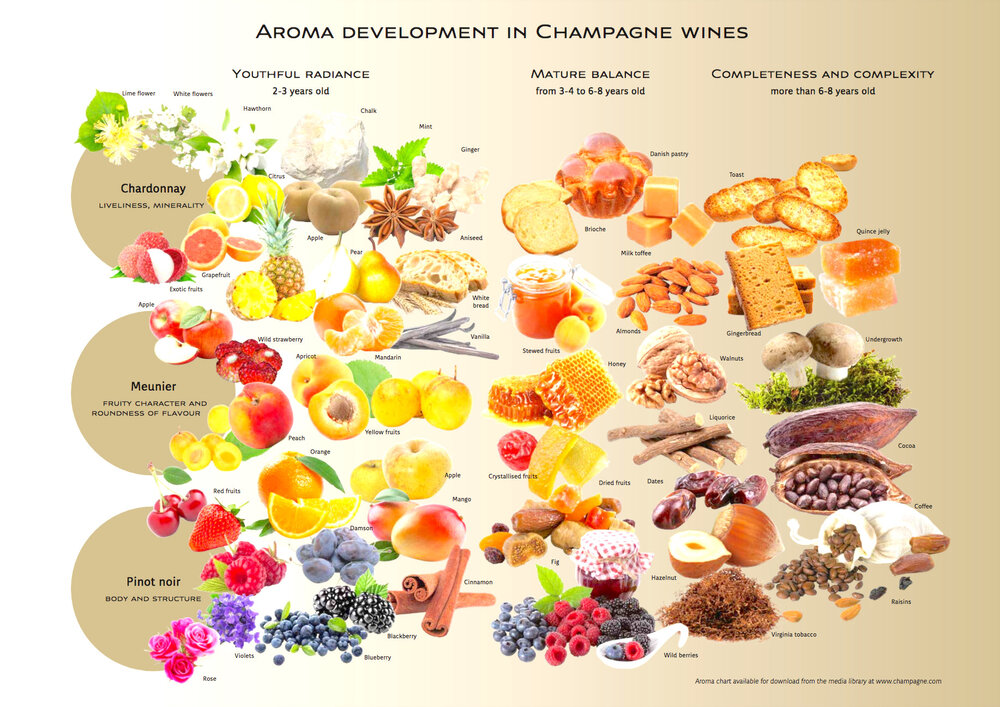
Which glassware you use when serving and enjoying Champagne will depend on the type and style of wine you’re serving as well as the occasion.
If you're popping a non-vintage Brut Champagne to celebrate a festive occasion or enjoy with brunch, by all means break out the flutes! Tulip-shaped, crystal flutes are ideal (avoid those thick, rolled-rim glasses at all costs!) because they allow the aromas of the Champagne to focus in the headspace of the glass where they can be readily enjoyed while still feeling celebratory, glamorous and fun.
But, if you're enjoying a pricier bottle like a Vintage or Prestige Cuvée Champagne, especially if it’s been aged, I highly recommend breaking out your White Burgundy or white wine glasses. The larger bowl and shape of these glasses is perfect for appreciating the complex aromas and flavors of these wines that have developed over time.
You also want to serve special or aged Champagnes slightly warmer than the recommended 45 degrees for most sparkling wines. As these graceful, elegant wines warm up (i.e. 50 degrees), their aromas and flavors are more readily able to be savored and enjoyed.
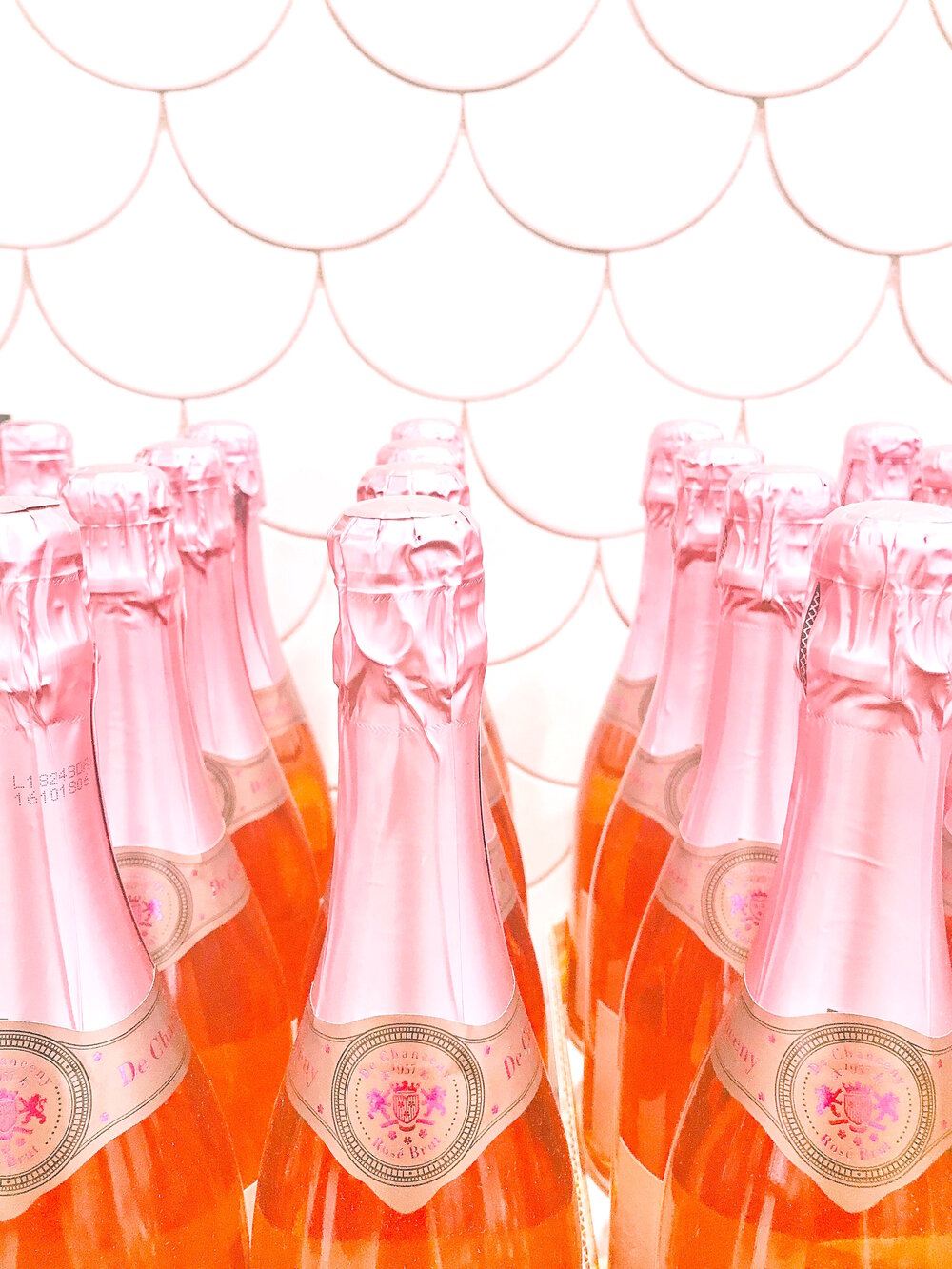
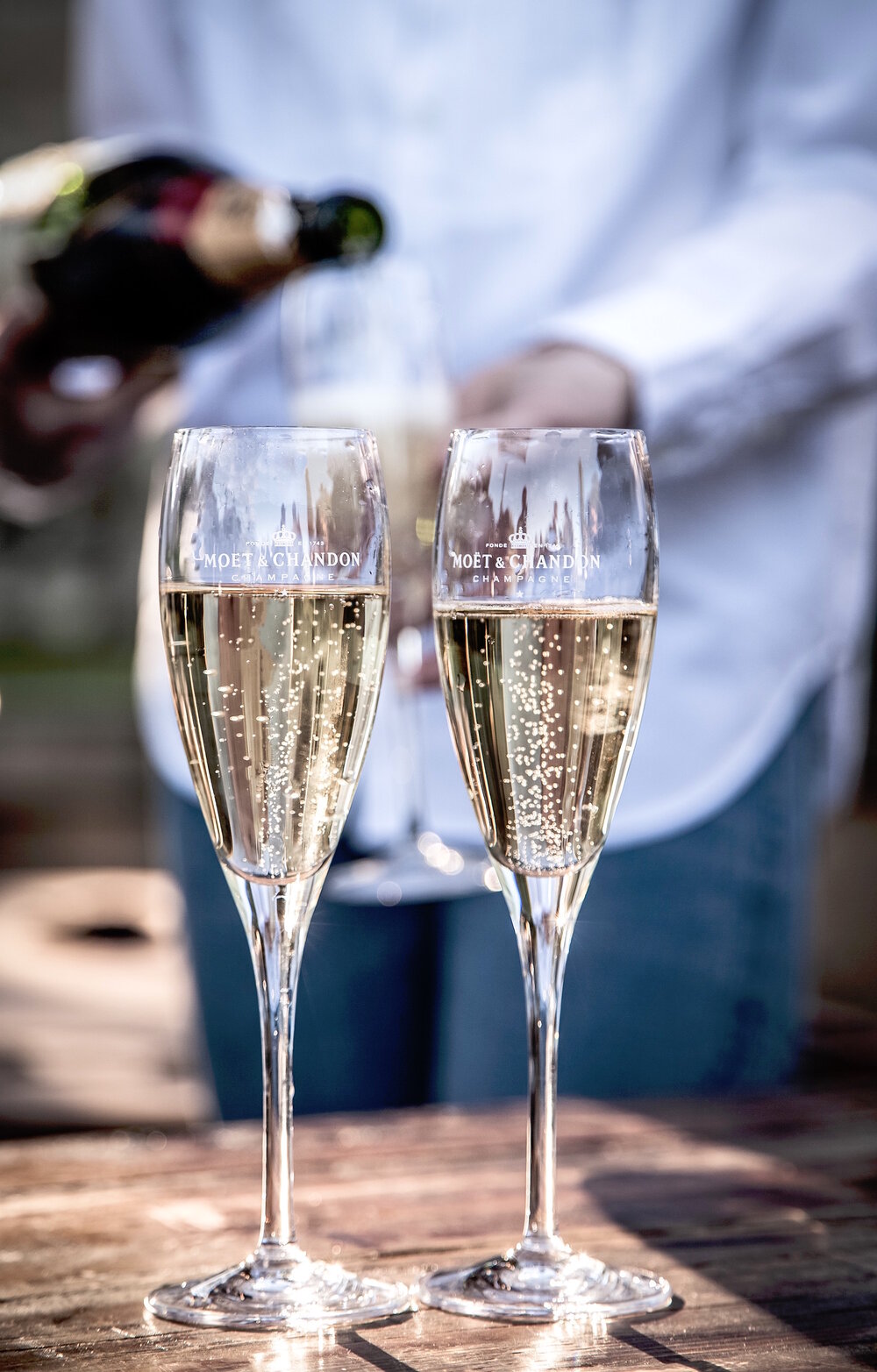
I hope you my Champagne Wine 101 helpful and that it inspired your understanding of this truly delightful wine. If you have any additional questions about anything you’ve read, please let me know in the comments section below. And when you’ve sufficiently soaked up all of this information, please proceed to the next two 101 installments: White Wine 101 and Red Wine 101.
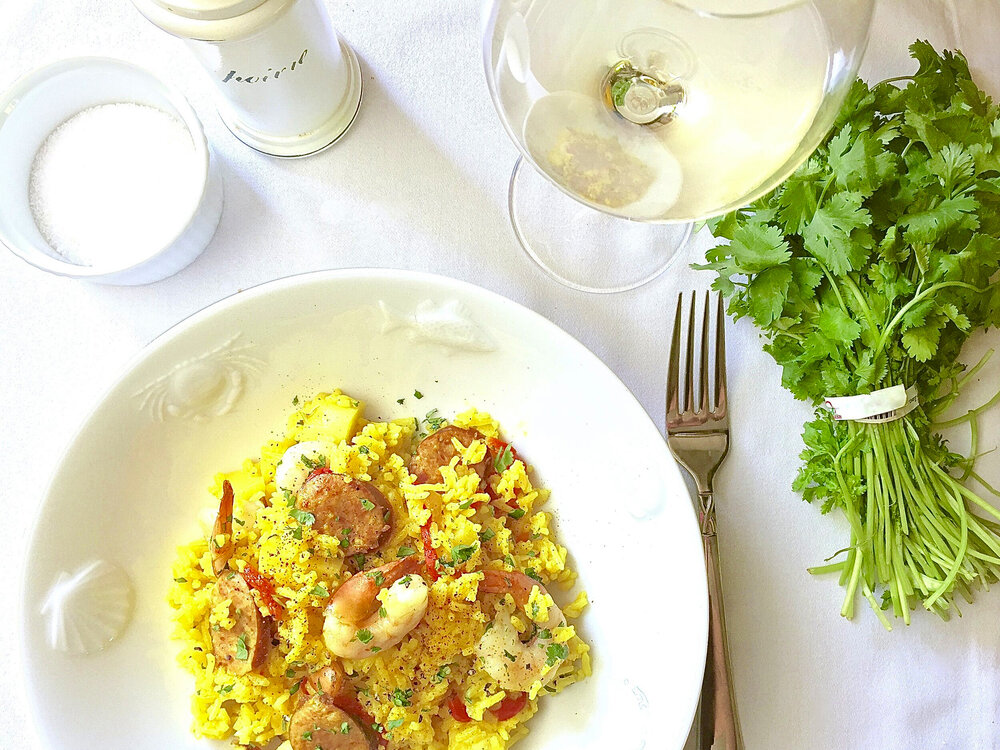
When you’re first learning to cook, there are recipes that are so delicious and mouthwatering they instantly fuel the desire for further culinary exploration. You usually know when you’ve found them because your initial reaction is, “did I just make that?” I think most of us who love to cook remember these milestones that inspired our continued quest for deliciousness. This recipe for Florida Jambalaya is one such recipe.
I discovered this recipe in Bon Appétit magazine over twenty years ago, when I was first learning to cook. I would go to the grocery store, pick up the latest issue of BA, flip through the index and choose something that sounded good to me. And after making this recipe for the first time, I honestly couldn’t believe something so delicious came out of my small rental apartment kitchen. I was totally smitten with how the flavors of onion, garlic, sausage, shrimp and cilantro came together to create a synergy that was so superior to any of the ingredients on their own.
Florida Jambalaya quickly became one of my signature recipes and as I moved around the country in pursuit of grad school and a new career I had the pleasure of sharing it with friends from Denver, Colorado to New York, New York. As a native Floridian it was like taking a little bit of home with me and it has always, I repeat, always garnered rave reviews. One dinner party guest even ate the shrimp tails he enjoyed it so much!
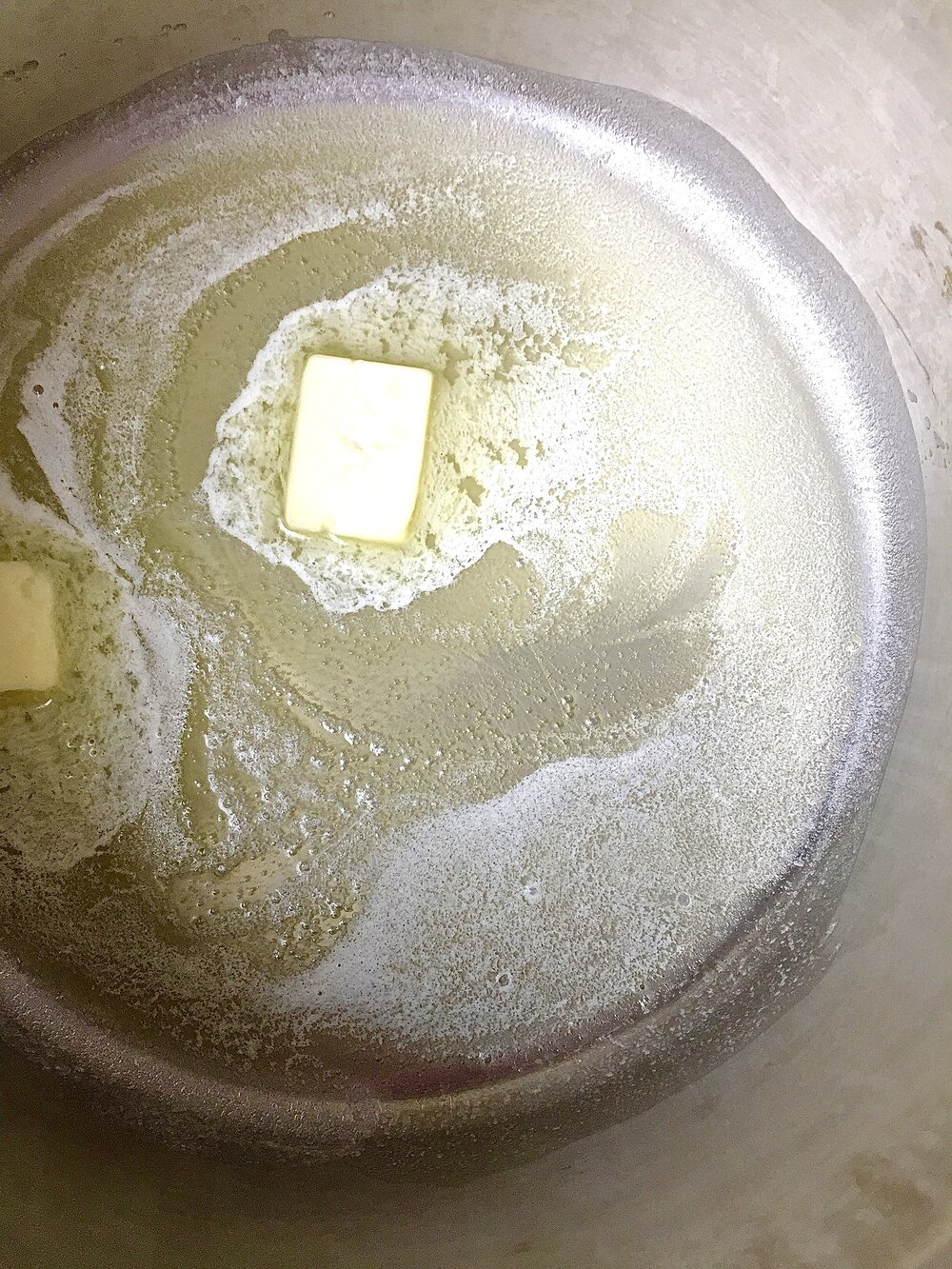
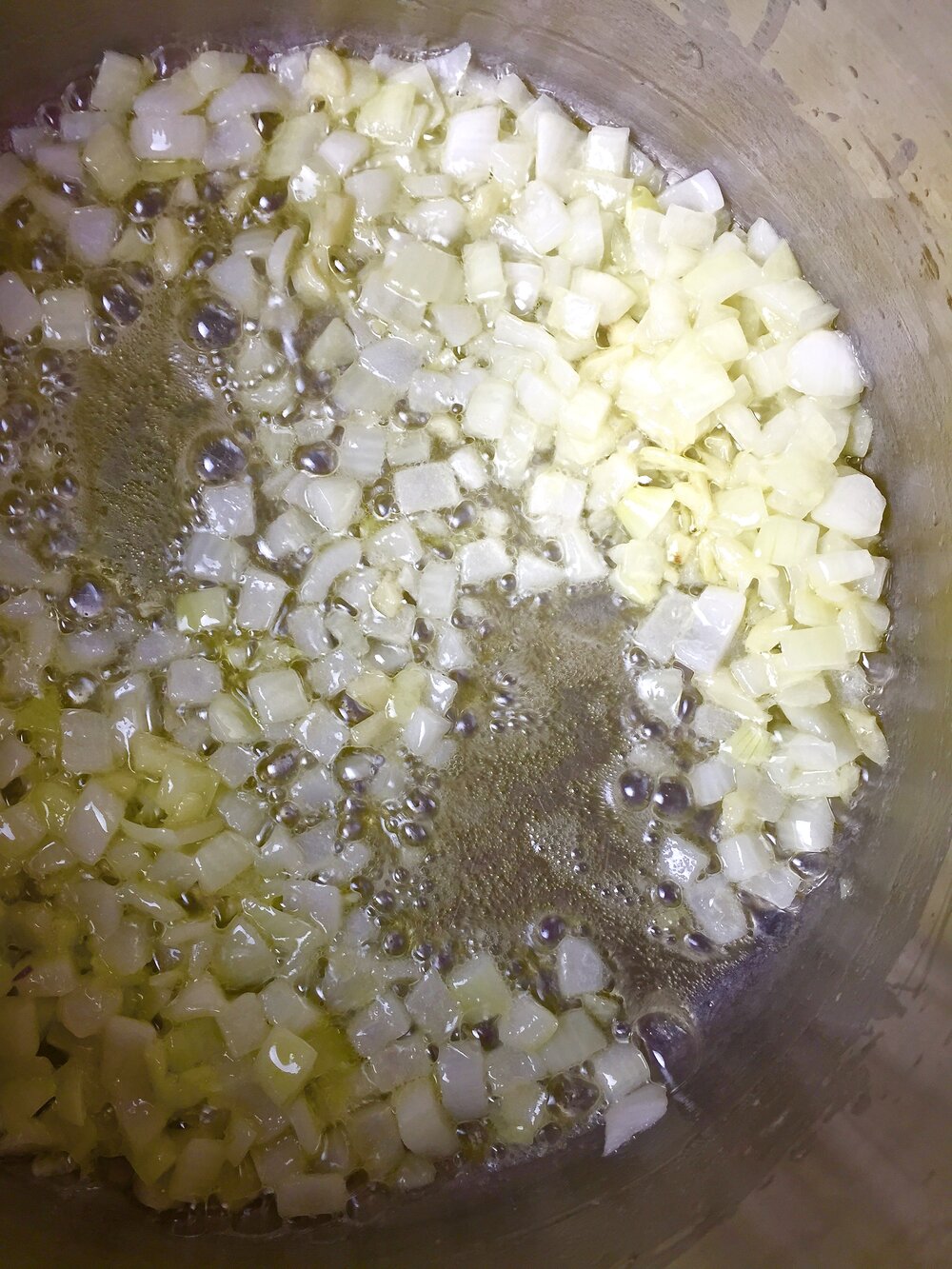
The word jambalaya originated in Southern France as part of the Occitan language. Eventually it found its way to the US and today, the two traditional styles of jambalaya are Creole and Cajun.
Creole jambalaya hails from New Orleans' French Quarter and began as an attempt to make Spanish paella in the New World. Saffron, an intrinsic component of paella, was not readily available so tomatoes were substituted. Creole jambalaya also incorporates "The Trinity," a mixture of celery, onion and green pepper considered to be a hallmark of Louisiana cooking. It also calls for a combination of meats including chicken and/or andouille sausage as well as seafood.
Cajun jambalaya, on the other hand, originated in the rural, low lying swamp country of Louisiana where crayfish, oysters and turtles were plentiful. It is smokier and spicier than Creole jambalaya and does not call for tomatoes. The meat in the dish was usually browned to give the dish its color which is why it is often referred to as "Brown Jambalaya."
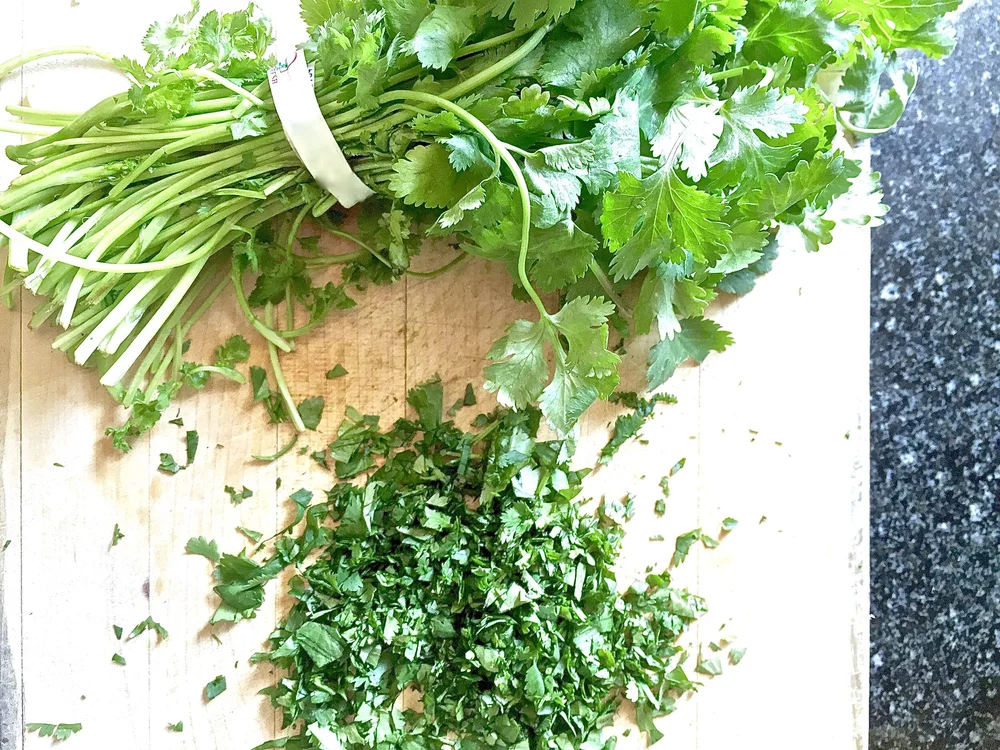
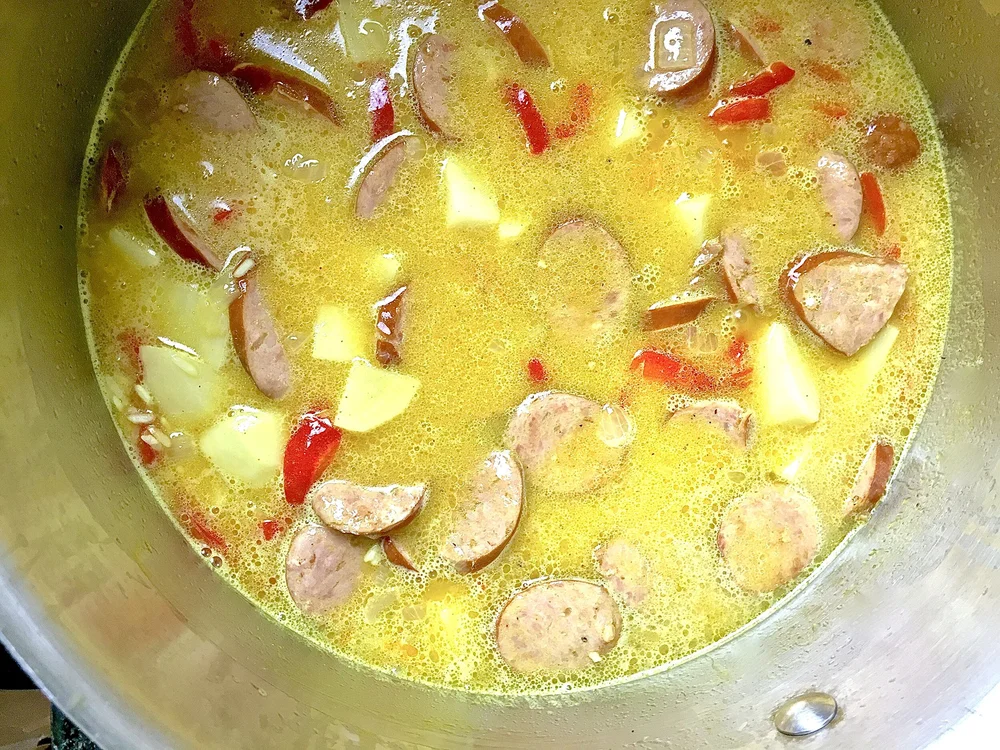
Florida jambalaya is an easy-to-make, Florida-inspired take on this Louisiana classic that’s only loosely based on these traditional preparations. It calls for sausage, seafood, rice and kielbasa instead of andouille sausage. And to give it a distinctly Florida flavor, I love using Key West pink shrimp but feel free to make it your own using whatever type of shrimp you like. For those allergic to shellfish, shredded or chopped boneless, skinless dark meat chicken also works very well - just be sure to allow enough time for the chicken to cook through.
Otherwise, the recipe itself is pretty straightforward and only takes about an hour to make.
For you wine lovers, a crisp, unoaked white wine is the best match for Florida Jambalaya, given the dish’s overall “weight” and bright flavors of shrimp, cilantro and turmeric. A Sauvignon Blanc-based wine like Michel Redde’s Sancerre "Les Tuilieres" from the Loire Valley would be a fabulous choice as would the juicy, tangy The Paring Sauvignon Blanc from Santa Barbara, California.
An unoaked Chardonnay like the Maison Joseph Drouhin Vaudon Chablis from Burgundy would also work extremely well, the key is to avoid wines with too much oak or heavy, astringent tannins that will clash with the flavors of the dish. I would also recommend using whatever wine you plan on enjoying with it, to make the recipe itself.
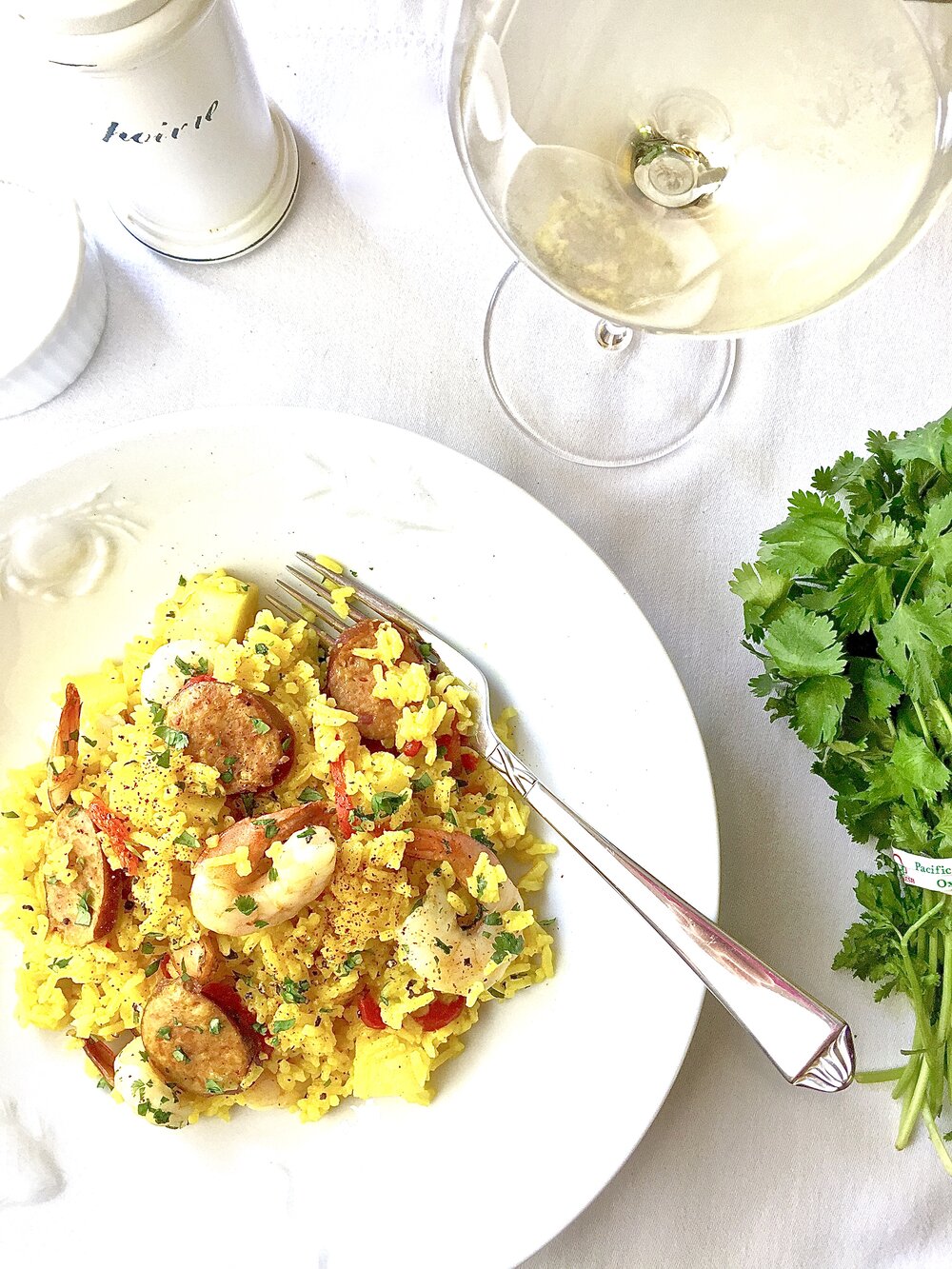
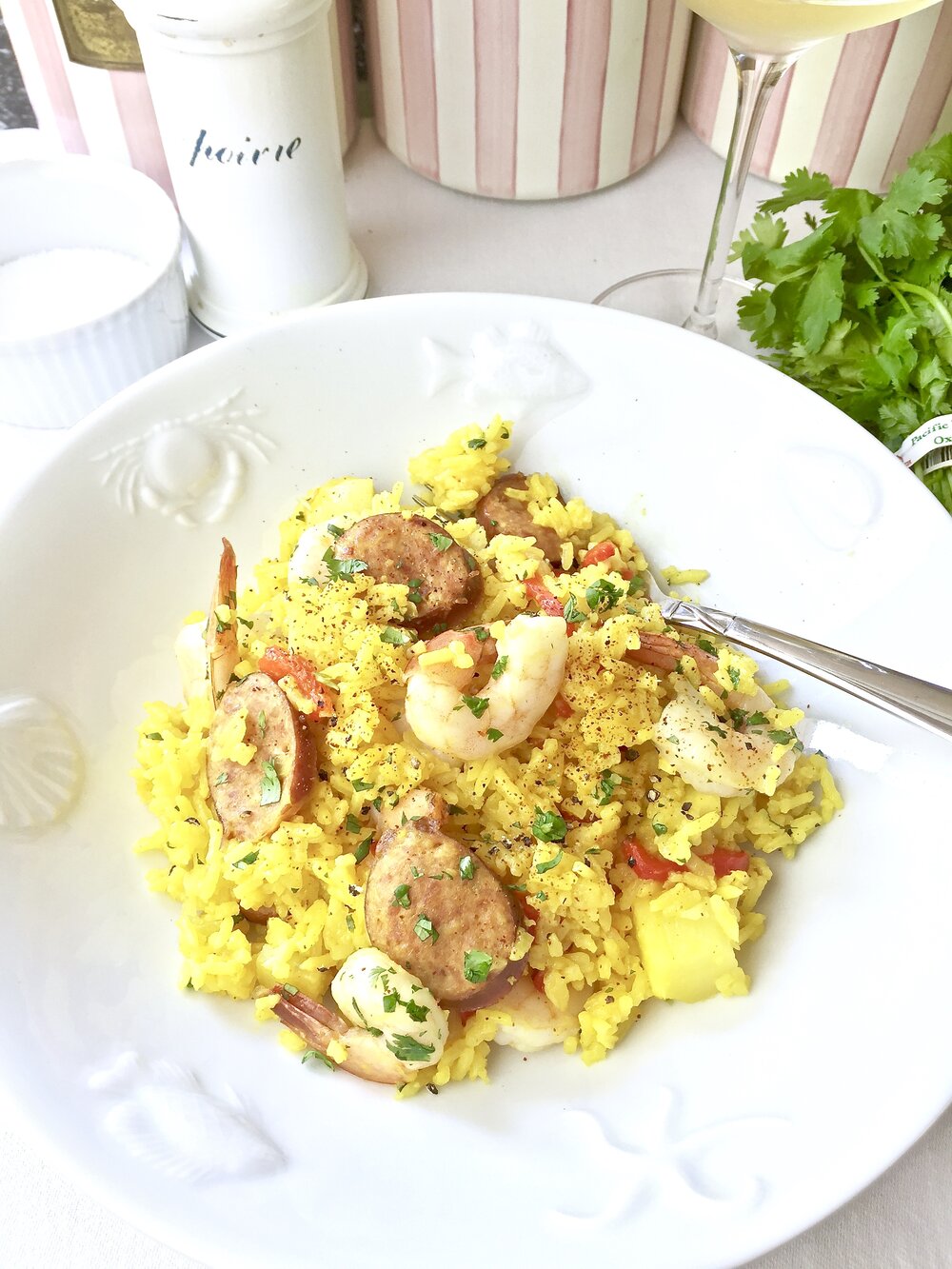
I hope you enjoy this delicious recipe for Florida Jambalaya as much as we do. It's perfect for an al fresco Summer meal or for a Florida-inspired Mardis Gras celebration - laissez les bons temps rouler!
Print Recipe"FLORIDA JAMBALAYA WITH SHRIMP + SAUSAGE"
Author: Bon Appétit Magazine
Serves: 4
Ingredients
3 Tablespoons salted butter
3 garlic cloves, chopped
1/2 cup chopped onion
1/2 lb. Polska Kielbasa or other smoked sausage cut into 1/2" pieces
1 cup long grain white rice
1/2 cup dry white wine
2 medium potatoes peeled and cut into 1" cubes
2 1/4 cups canned chicken broth
1 4 ounce jar of sliced pimientos with juices
1/2 teaspoon turmeric
Cayenne pepper to taste
1/2 lb. uncooked shrimp, peeled & deveined
1/2 cup chopped fresh cilantro
Instructions
) Melt butter in a heavy large saucepan over medium heat. Add onion and garlic and sauté until just soft, 3-5 minutes (be careful not to let the garlic burn).
) Add the kielbasa and cook until it begins to brown, approximately 5 minutes. Add rice and stir to coat. Mix in potatoes, broth, wine , pimientos and turmeric. Season with salt, pepper and cayenne to taste. Bring to a boil and stir well. Reduce heat to medium-low and cover and cook until the rice and potatoes are tender and liquid is absorbed, approximately 20 minutes.
) Mix in shrimp and cilantro. Cover and cook until shrimp are cooked, 5 minutes. Serve on a large platter, garnished with more chopped fresh cilantro.
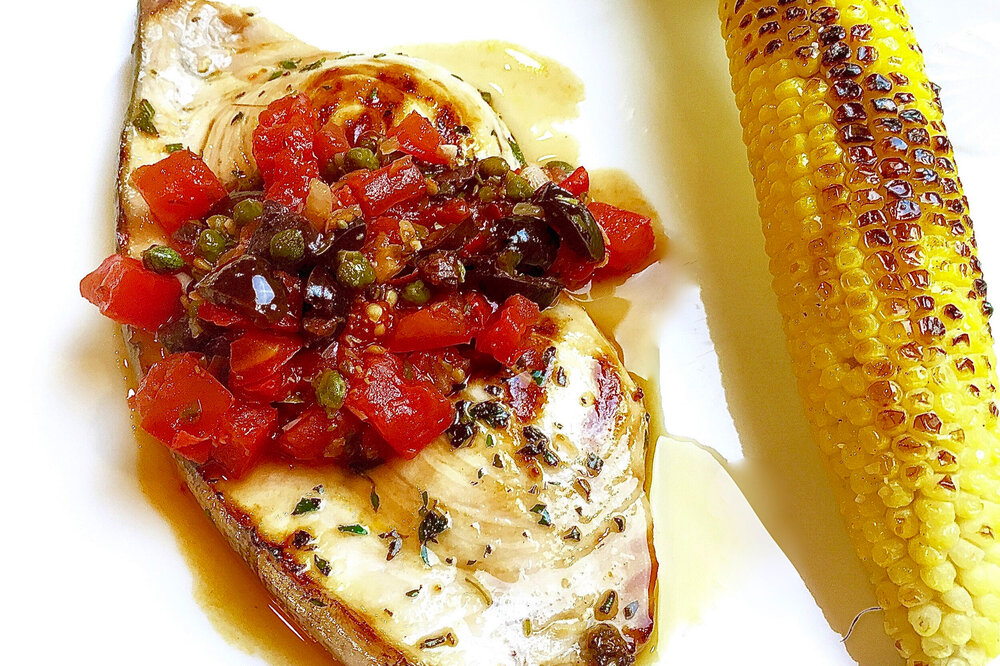
When the good Lord begins to doubt the world, he remembers that he created Provence.
One of my favorite food and wine pairings during the Summer months is a Tuna Niçoise Salad paired with a dry, Provençal rosé - it is sheer Summer deliciousness! But why limit the wonderful Niçoise flavors to just ONE dish? That just doesn’t seem fair. So when a friend kindly offered us some fresh swordfish steaks, these delicious flavors immediately sprang to mind as we happily accepted his oh so generous offer.
Niçoise (pronounced nee-SWAZ) essentially means "in the style of Nice," the fabulous French city located in the luxurious Côte d'Azur. Dishes labeled as such typically include a combination of traditional, local ingredients such as black olives, capers, garlic, tomatoes and anchovies. This recipe for Swordfish Niçoise includes a delicious mixture of black olives, tomatoes, capers, garlic, shallots and a little Herbes de Provence which beautifully complements the flavor and texture of the succulent fish.
Herbes de Provence is a delightful mixture of dried herbs typically found in the Provence region including savory, marjoram, rosemary, thyme, oregano and lavender. It is usually sold in a traditional clay pot and greatly enhances the flavor of dishes ranging from grilled fish to savory stews.

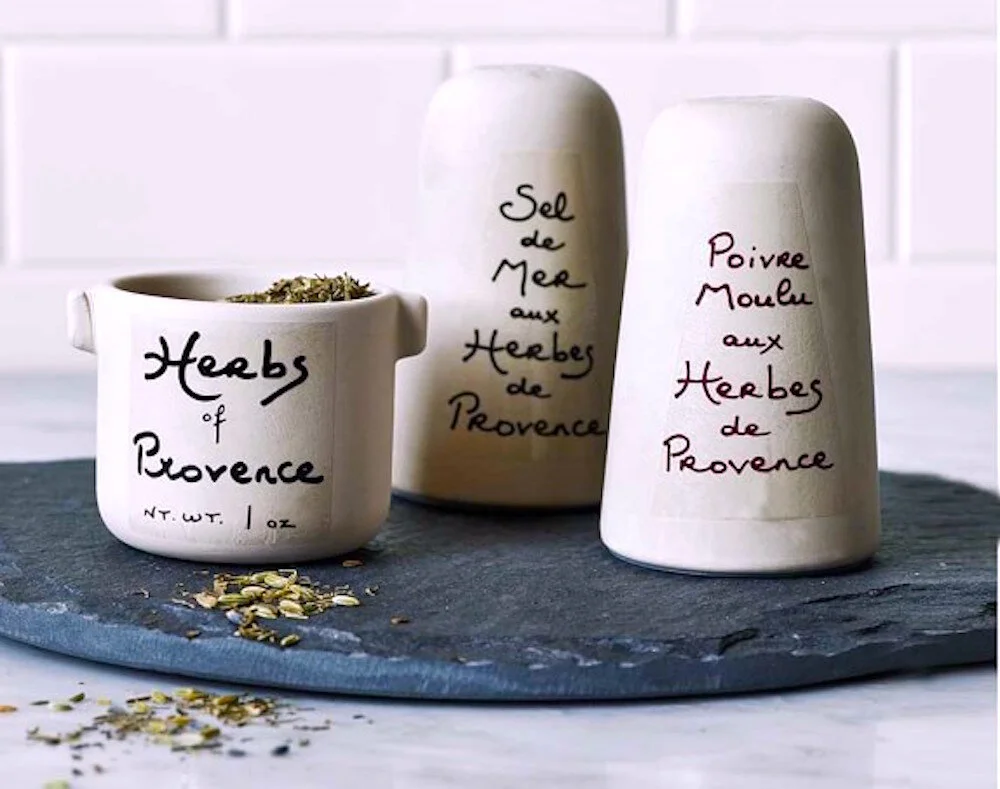
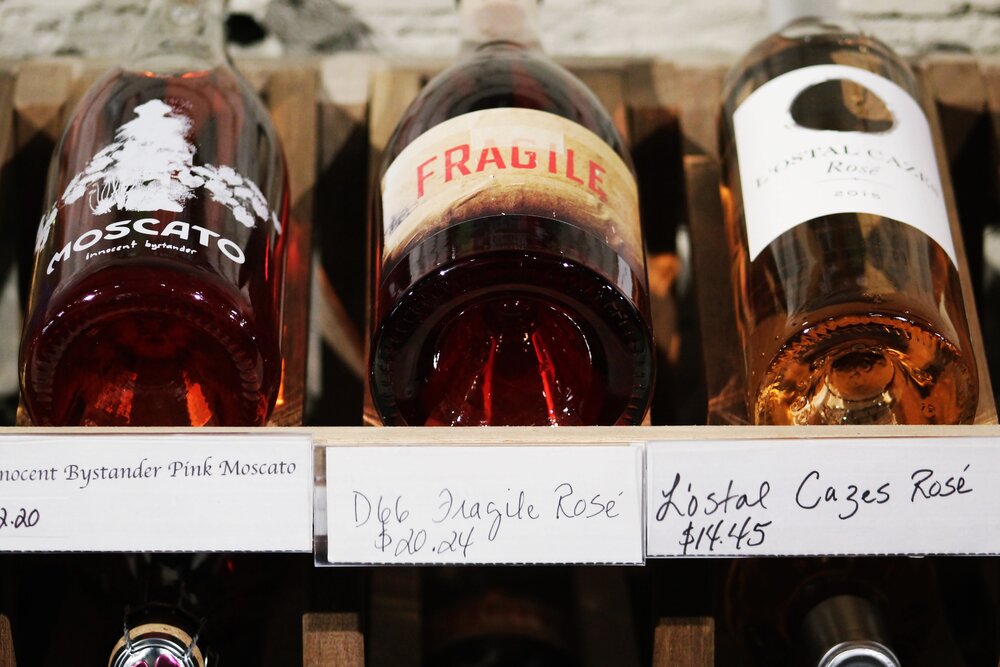
We served the Swordfish Niçoise with my husband's favorite Summer staple - corn on the cob! We cooked the sweet, yellow corn on the grill, allowing for a little "char" for added flavor and then slathered it with butter and a healthy dusting of Kosher salt and freshly ground black pepper before greedily consuming. Talk about simple but oh so very perfect!
To wash everything down and round out our Perfect Pairing, I stuck with one of my favorite pairing principles, if it grows together, it goes together! A refreshing glass of dry, Provencal rosé accentuates the dish’s flavors beautifully. On this particular evening we enjoyed the Miraval Rosé, the well-known Provençal winechild of Brad and Angelina, but any tasty dry rosé will do. Our favorite Provençal producers include Chateau Minuty and Chateau D’Esclans.
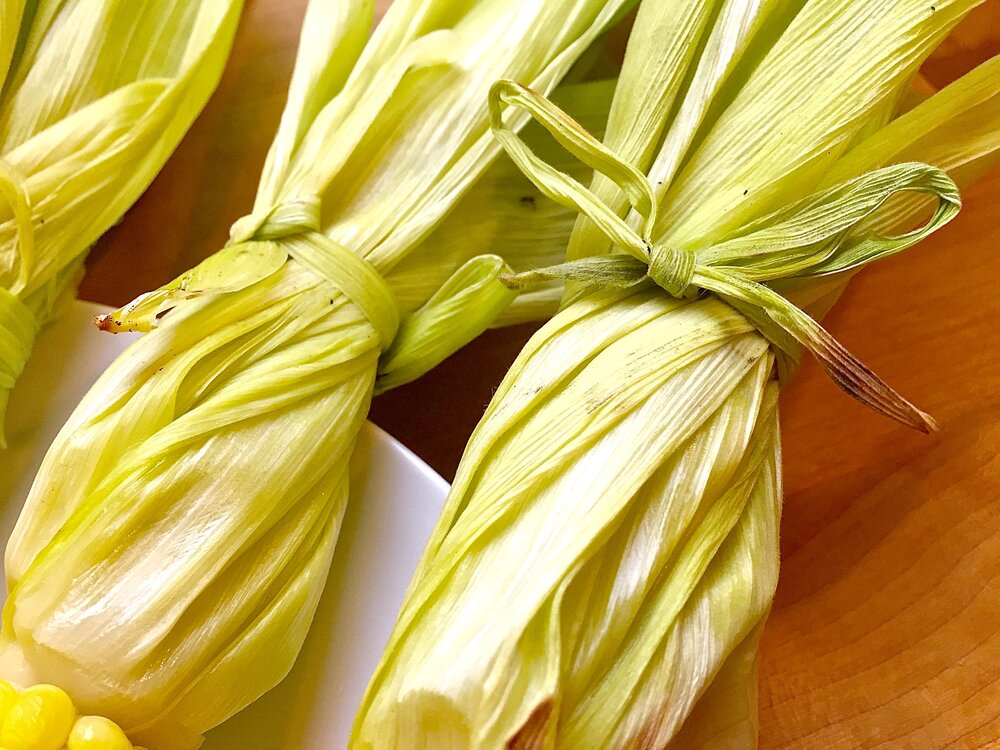
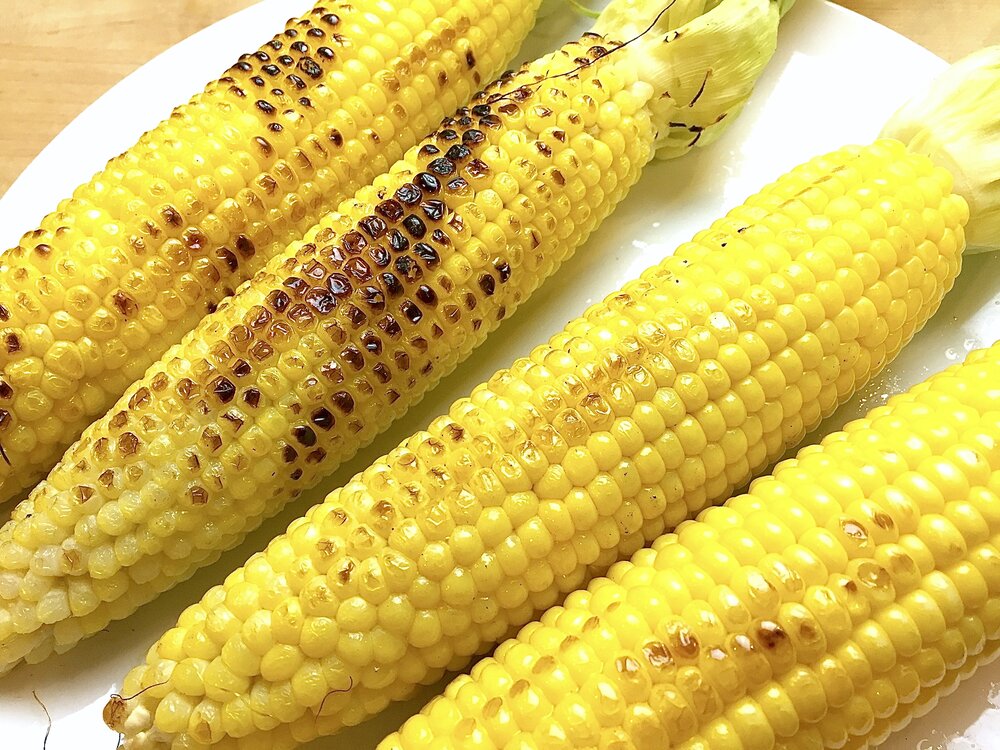
Before Summer draws to a close, I hope you have the chance to enjoy our Perfect Pairing of Swordfish Niçoise and a Provençal Rosé. In fact, why not invite a few friends over for an al fresco dinner and have everyone bring a bottle of their favorite rosé wine? What a great way to share your favorite and possibly discover a new one! What's your favorite Summer food and wine pairing? I'd love to hear about it in the comments section below!
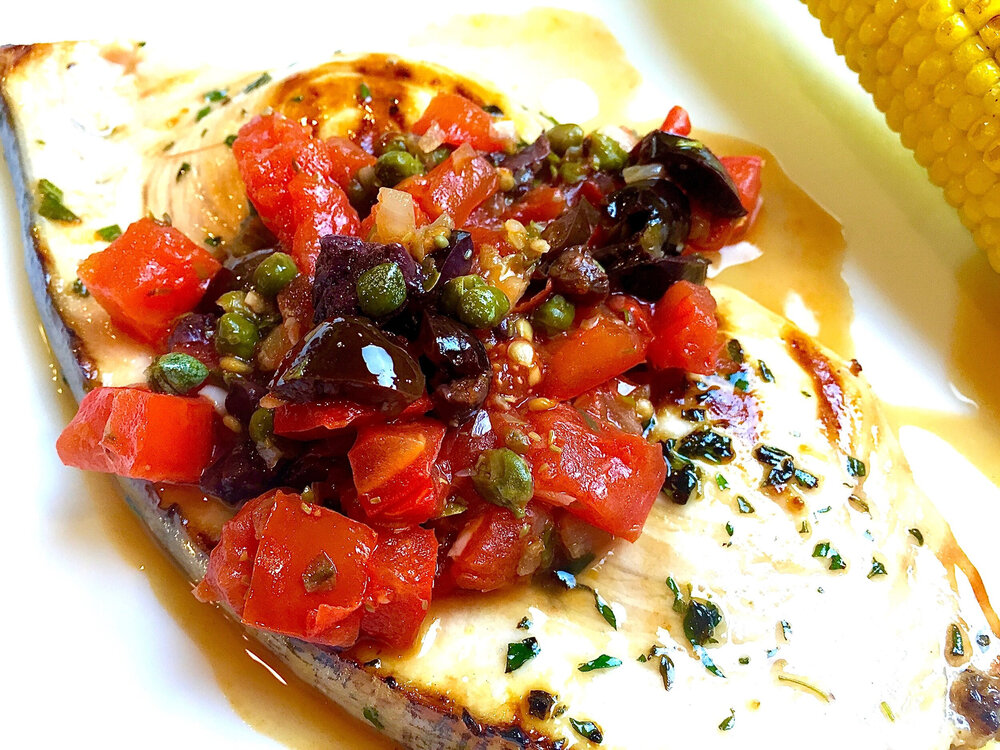
"PERFECT PAIRINGS: SWORDFISH NIÇOISE + A PROVENCAL ROSÉ"
Stephanie Miskew | The Glamorous Gourmet
Serves: 2
Ingredients
2 Swordfish steaks
4 Tablespoons olive oil
1 teaspoon Herbes de Provence
1 teaspoon fresh thyme, chopped
1 teaspoon fresh rosemary, chopped
2 shallots, chopped
2 cloves of garlic, chopped
1/2 cup pitted oil-cured, black or Niçoise olives, roughly chopped
2 Tablespoons capers, drained and roughly chopped
3 ripe red tomatoes, chopped
1/2 cup dry rosé wine
Kosher salt & freshly ground black pepper
Instructions
) Combine 2 Tablespoons olive oil, thyme and rosemary in a glass baking dish. Place the swordfish steaks in the mixture and turn to coat on both sides. Marinate the steaks in the olive oil and herb mixture at room temperature for one hour.
) Heat remaining 2 Tablespoons of olive oil in a frying pan over medium heat. Add shallots and garlic and saute until softened but not browned, 5 minutes. Add tomatoes, olives, capers, Herbes de Provence and wine and stir to combine. Bring to a boil, then cover and reduce heat and simmer for approximately 10-15 minutes. Season sauce to taste with Kosher salt and black pepper.
) Heat grill pan or outdoor grill over medium-high heat. Season swordfish steaks on both sides with Kosher salt and black pepper and grill until medium-rare, approximately 4-5 minutes a side depending on the thickness of the steaks.
) Plate steaks and top with Niçoise sauce. Serve immediately with a glass of chilled Provençal Rosé.
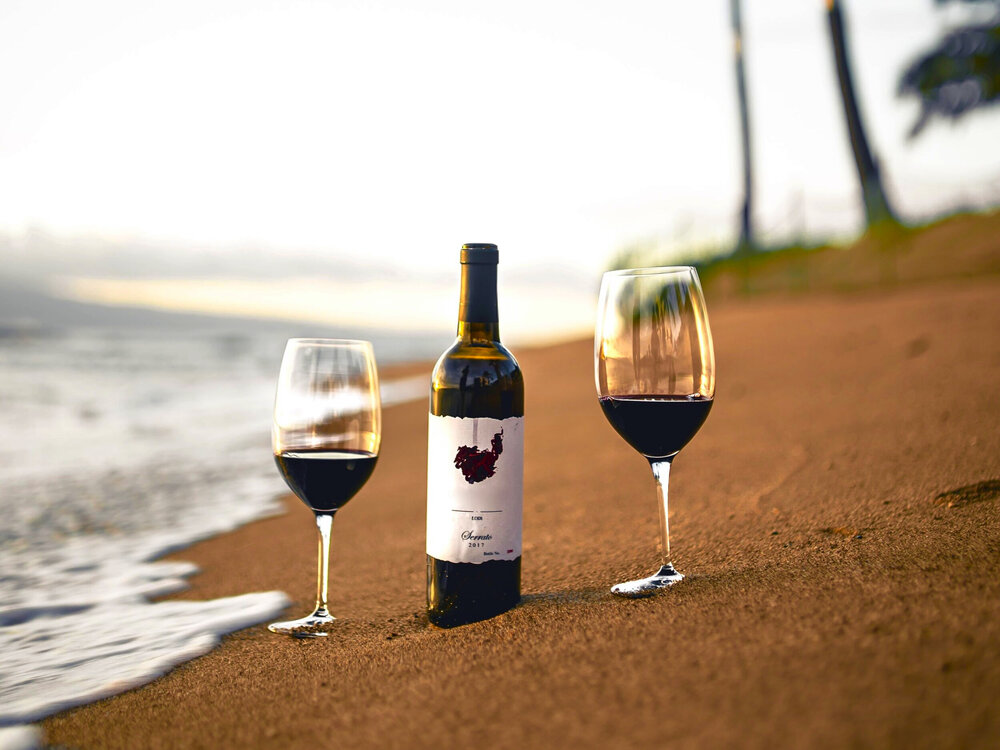
All worries are less with wine.
While rosé has quickly become Summer’s signature wine, with white wine coming in a close second, today I’ve got something for you die hard red wine lovers who would MUCH rather #Cabernetallday - even in 110 degree heat! And thanks to those of you who reached out to me about this topic because there are puh-lenty of positively delightful, seasonally-appropriate red wines from around the globe for you to enjoy this Summer and I’ve included some of my favorites in this post.
You can enjoy these beauties on their own (served with a slight chill, of course!), or paired with your favorite Summer dishes like meatier fish (i.e. swordfish, salmon), burgers and BBQ - the possibilities are truly endless…and oh so delicious!
Before we dive into the selections, here are a few tips to keep in mind when choosing a Summer red wine:
Opt for wines made from thinner-skinned red grape varieties such as Pinot Noir, Gamay and Barbera which produce light- to medium-bodied red wines with minimal tannins that are much more refreshing in the heat of Summer.
Avoid heavily oaked red wines. French oak imparts notes of baking spices such as clove, cinnamon and allspice as well as a richer, more viscous texture which is more of a #Fallthang. Summer reds should exhibit a nice balance between fruit and acidity with only a kiss of tannin!
Keep an eye on that ABV! If you’re spending the day at the beach or lounging by the pool you don’t want to get prematurely #daydrunk because a wine’s alcohol level is off the charts. Stick with reds 14.5% or lower and you’ll be able to enjoy AND remember your Summer day.
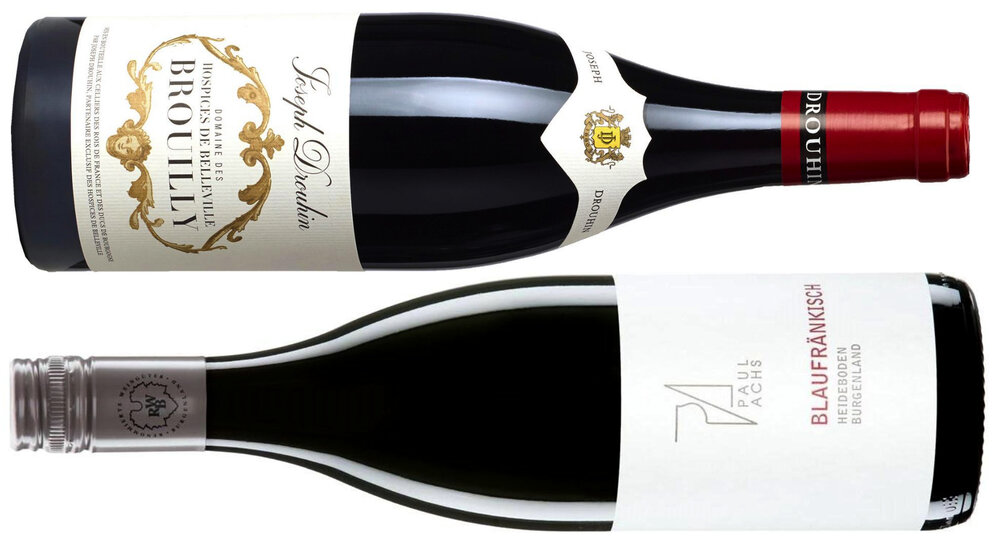
1.) Maison Joseph Drouhin Hospices de Belleville Brouilly, Beaujolais, France ($25): One of the best Summer pandemic #winegoals you can have is to get to know cru Beaujolais - NOT Beaujolais Nouveau - CRU Beaujolais! These wines hail from specific villages or “crus” (there are 10 of them!) within the southernmost part of Burgundy and are crafted entirely from the Gamay grape that produces utterly charming, light- to medium bodied reds that are vibrant, fruity and delicious. This exclusive partnership between Maison Joseph Drouhin and the Hospices de Belleville is worth seeking out with notes of black cherry, wild strawberry, violets and spice - for maximum enjoyment, serve slightly chilled!
2.) Paul Achs Blaufränkisch Heideboden, Burgenland, Austria ($19): Please don’t let the name deter you! The Blaufränkisch grape is one of my Summer faves and it might just become yours too! This indigenous Austrian grape produces medium-bodied red wines known for having oodles of lush, dark fruit (i.e. blackberry, black cherry and plum) accentuated by notes of black pepper, herbs and flowers. And in the hands of esteemed winemaker Paul Achs, you really can’t go wrong! Opt for youthful examples of Blaufränkisch like this one which are guaranteed to charm you with their lively acidity and soft, approachable tannins.
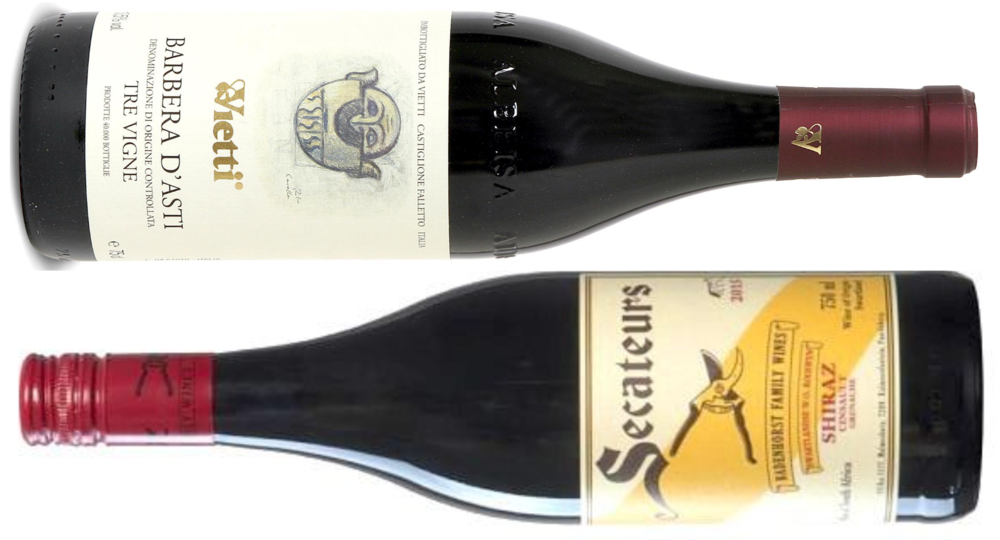
3.) Vietti Barbera d’Asti Tre Vigne, Piedmont, Italy ($18): If you are new to the Barbera grape, this delightful Italian red will immediately win(e) you over! Not to be confused with the Nebbiolo-based Barolo and Barbaresco wines which hail from the same region and require ample aging, Barbera (which is the name of the grape AND the wine) is ready to drink young. These alluring, medium-bodied gems are known for their racy acidity, soft tannins and charming, fruity character. This incarnation from the legendary Vietti family display notes of black currant, black cherry, violet and cassis with a lengthy, spice-tinged finish that’ll have you coming back for more!
4.) A.A. Badenhorst Secateurs Red Blend, Swartland, South Africa ($17): The Secateurs line of wines, named for the tool used to prune back the vines in the Winter and harvest ripe grapes in the Summer, from cousins Adi and Hein Badenhorst is, simply put, sheer Summer perfection! I mentioned the Secateurs Chenin Blanc in my Summer white wine post and the red, a juicy blend of Cinsault (82%), Shiraz (10%) and Grenache (8%), is equally delicious. Fragrant aromas of ripe red fruit and spice are followed on the palate by savory flavors of ripe red cherry, red currant and pomegranate with hints of anise and spice with a supple, smooth mouthfeel.
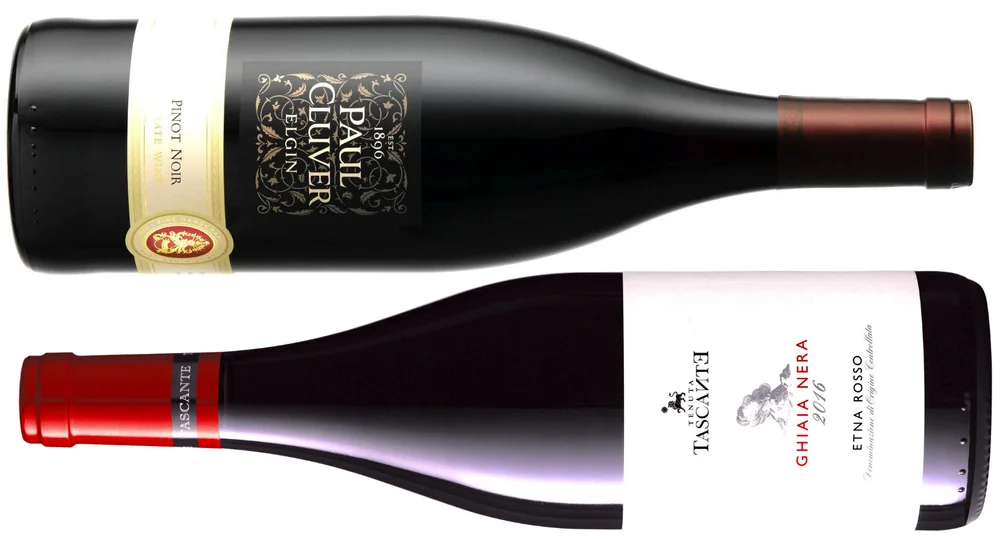
5.) Paul Cluver Estate Pinot Noir, Elgin, South Africa ($24): Pinot Noir has the ethereal lightness that’s so desirable in a Summer red wine but often at a very high price. Enter the wines of Paul Cluver! This 4th generation family has been farming in the Elgin Valley for 120 year and were the first to pioneer it as a fine wine region. The region’s cool climate is perfect for growing the finicky Pinot Noir grape and Cluver focuses exclusively on Burgundian clones. This gem of a wine is 100% Pinot Noir aged in a combination of (25%) new and used French oak barrels and the end result is a delightful, medium-bodied wine with classic notes of red cherry, cranberry, earth and spice.
6.) Tasca d’Almerita Tascante Etna Rosso Ghaia Nera, Sicily, Italy ($20): Sicily seems to be a never-ending source of intriguing grapes like this red beauty: Nerello Mascalese. Producing wines I would describe as Pinot Noir meets Nebbiolo, its wines can be fruity, herbaceous, spicy and floral all at the same time and, perhaps most importantly, imminently enjoyable. The wine’s pale color belies its power, leading you to believe you’re in for a wimpy wine but that couldn’t be farther from the truth! Instead, this wine delights with robust aromas and flavors of black cherry, wild strawberry, spice + volcanic ash accentuated by a tangy acidity and lithe tannins.